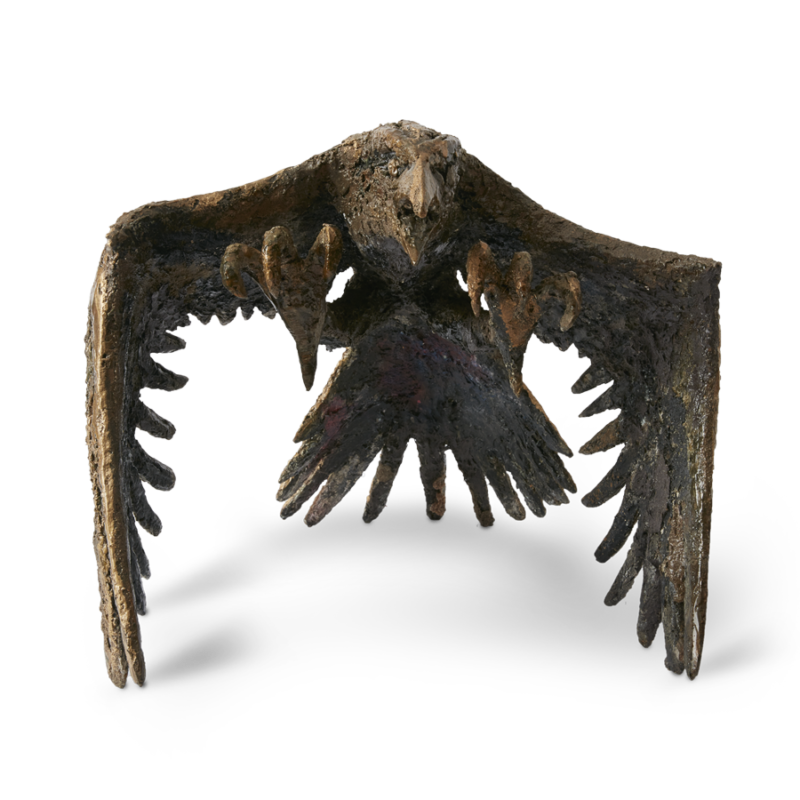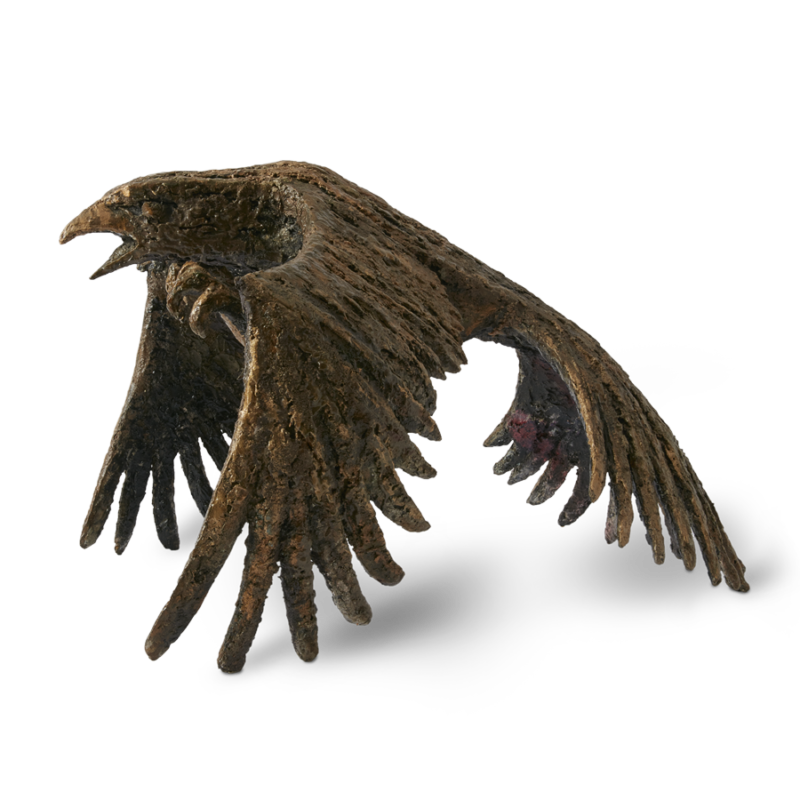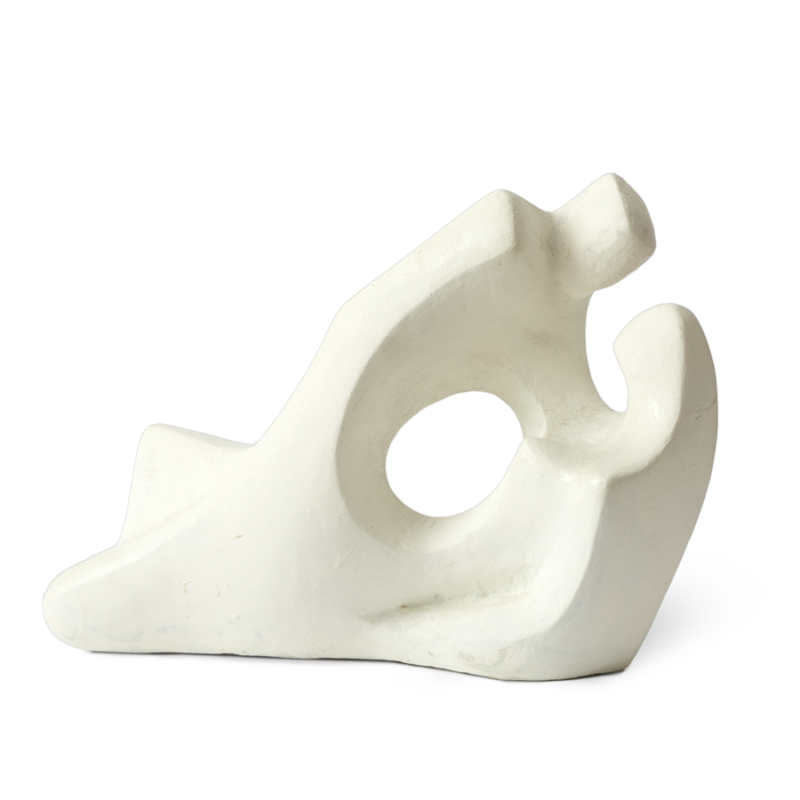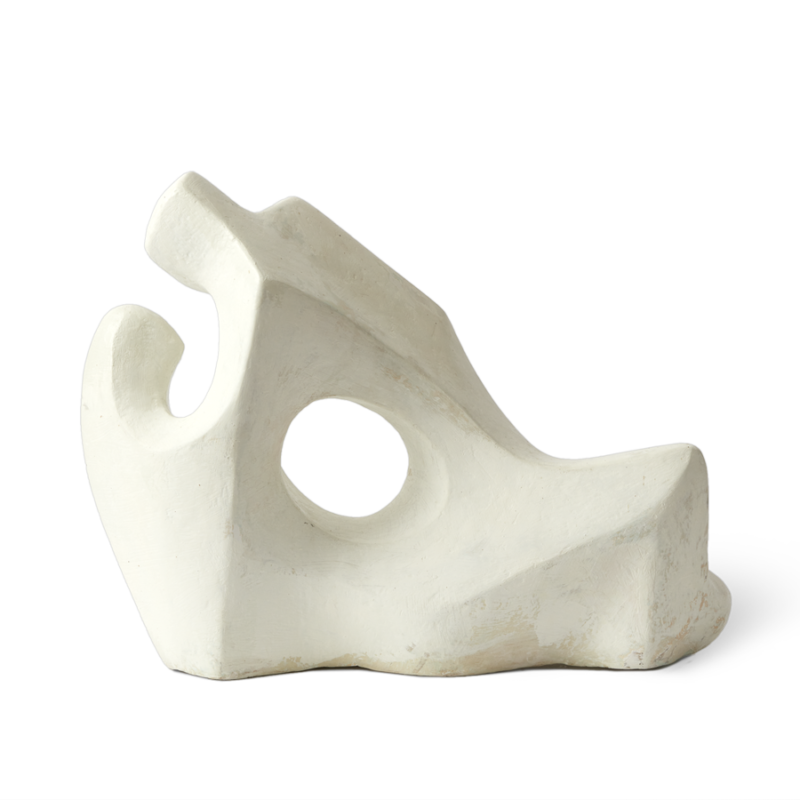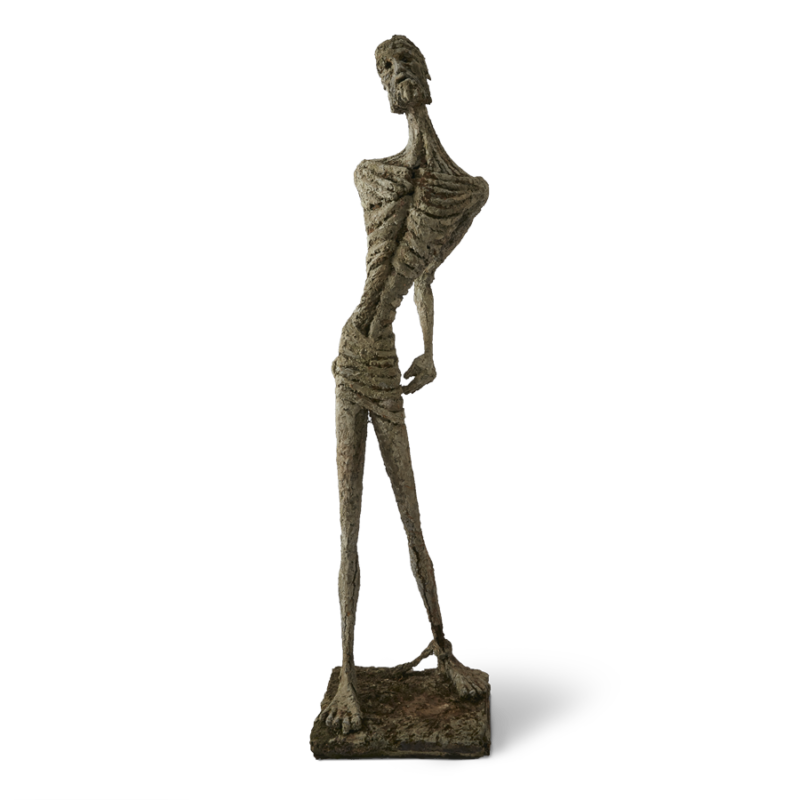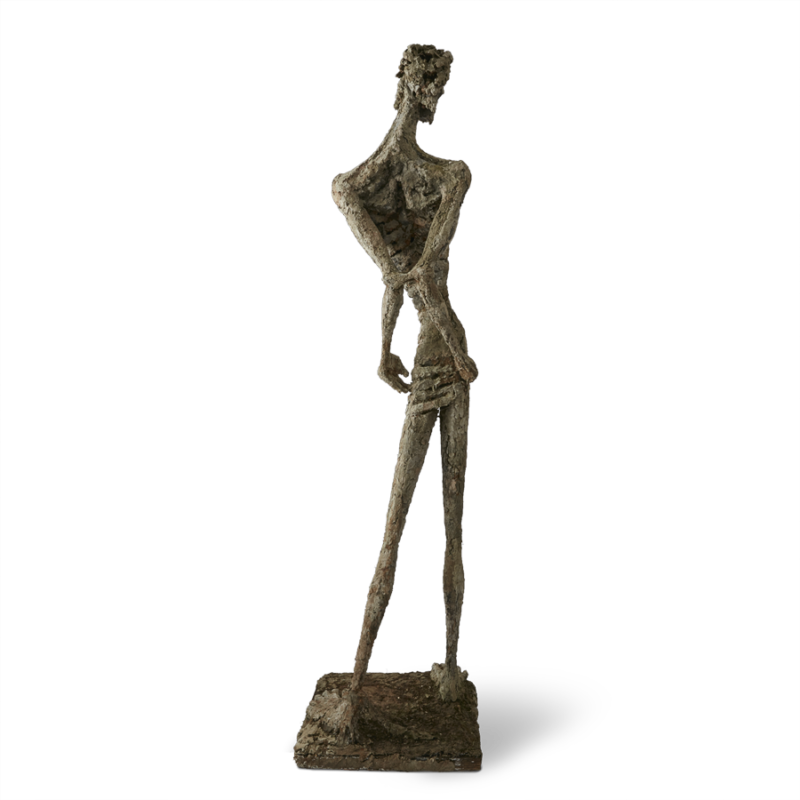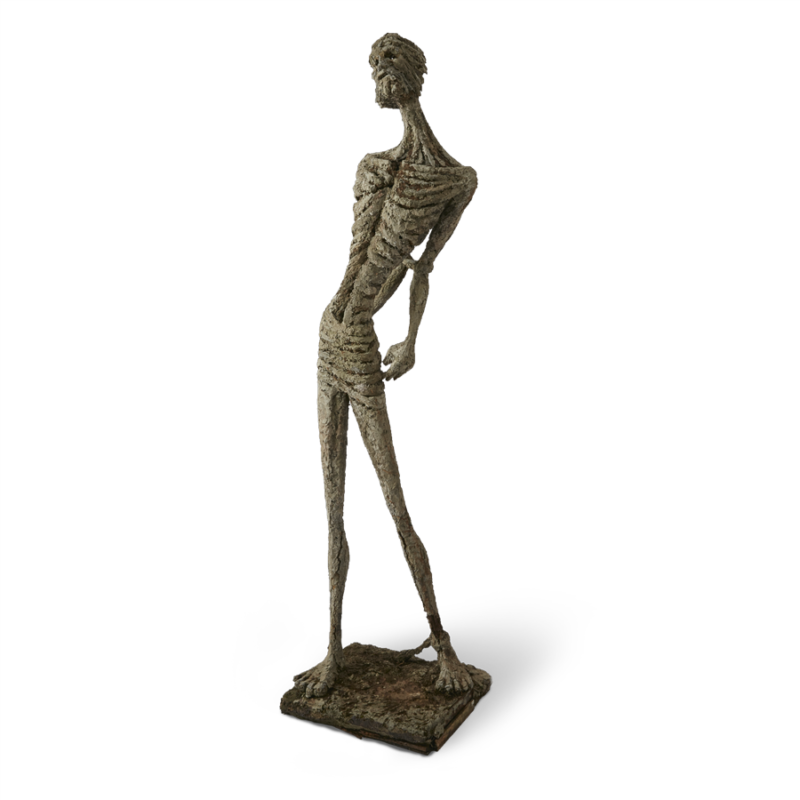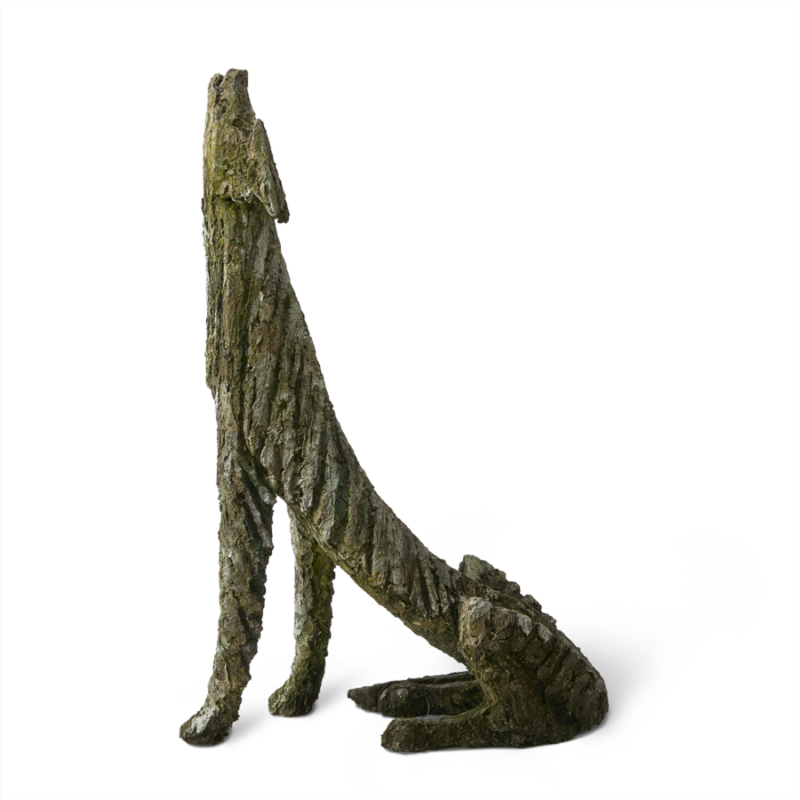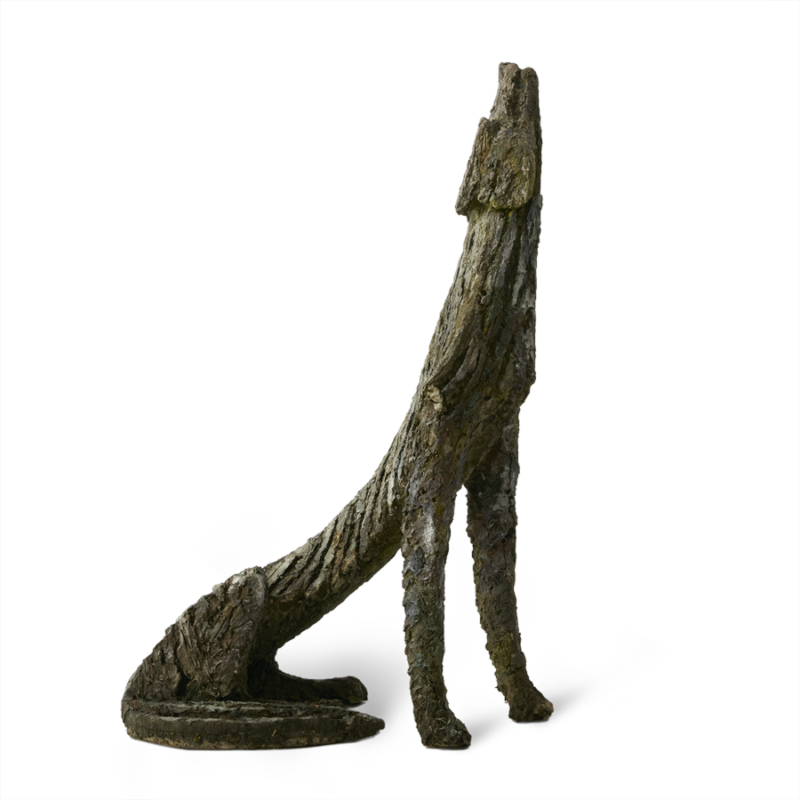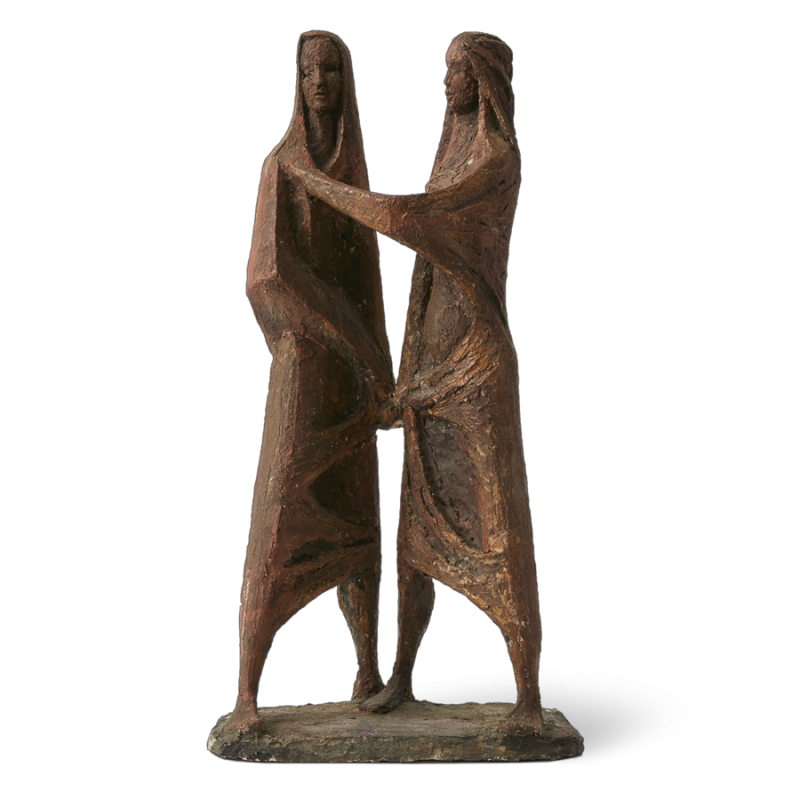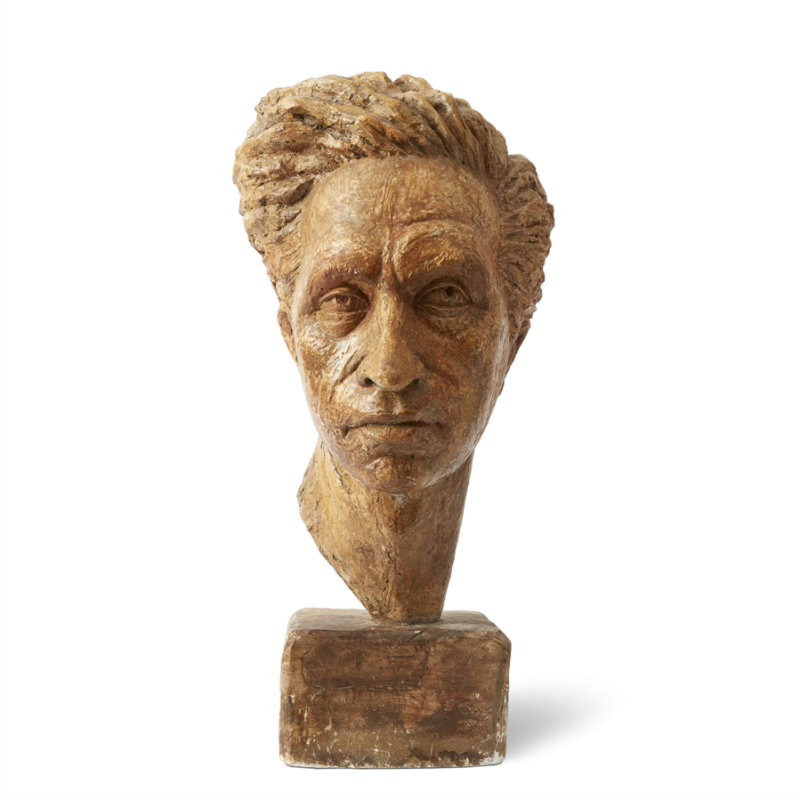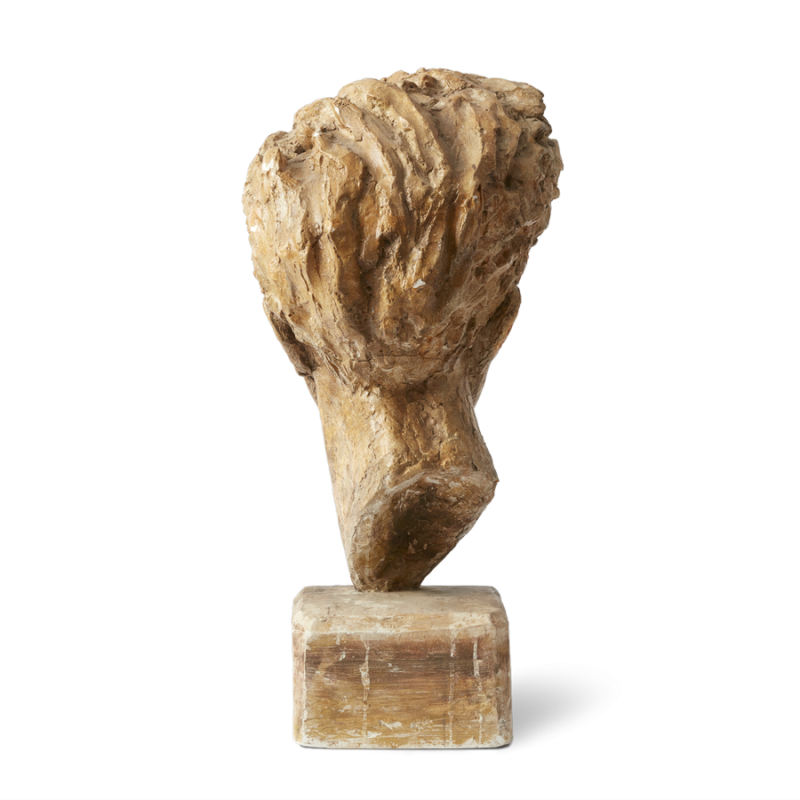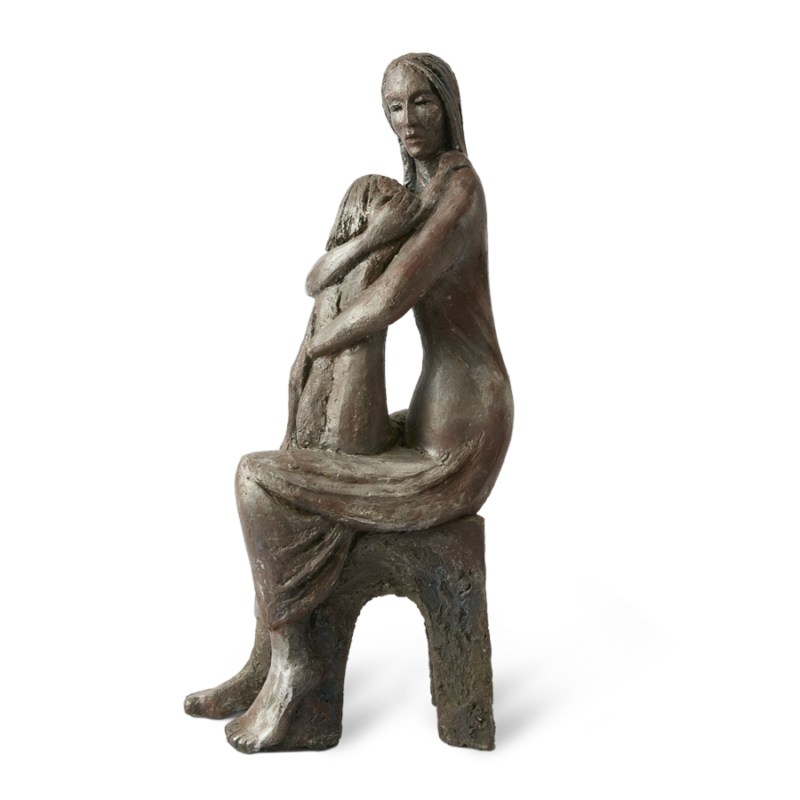
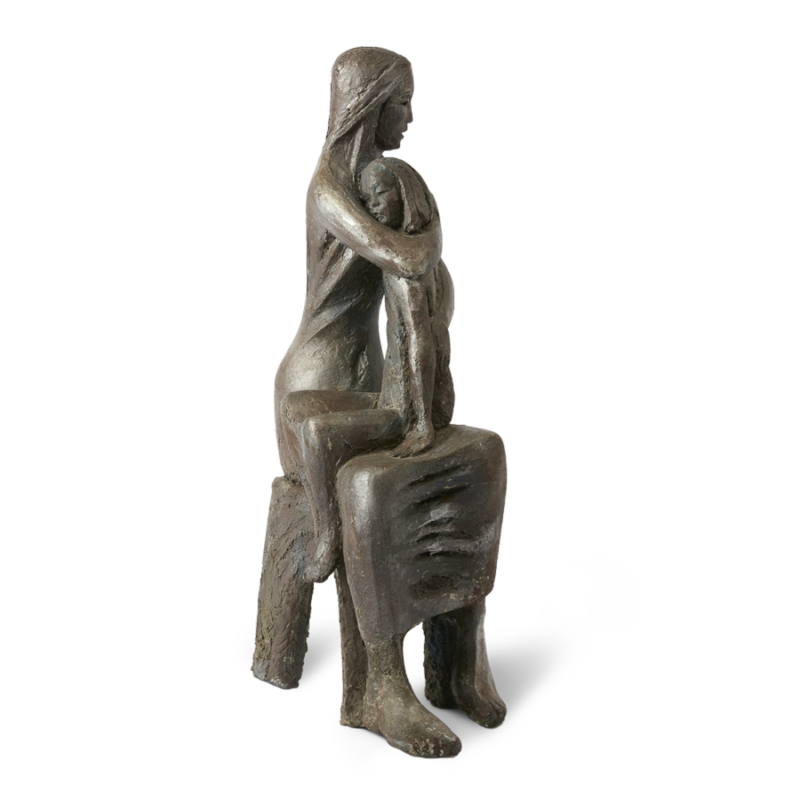

MOTHER AND DAUGHTER SEATED
76cm x 20cm x 39cm
Resin and spray paint
1990
A tender study of the intimacy of a mother and her daughter



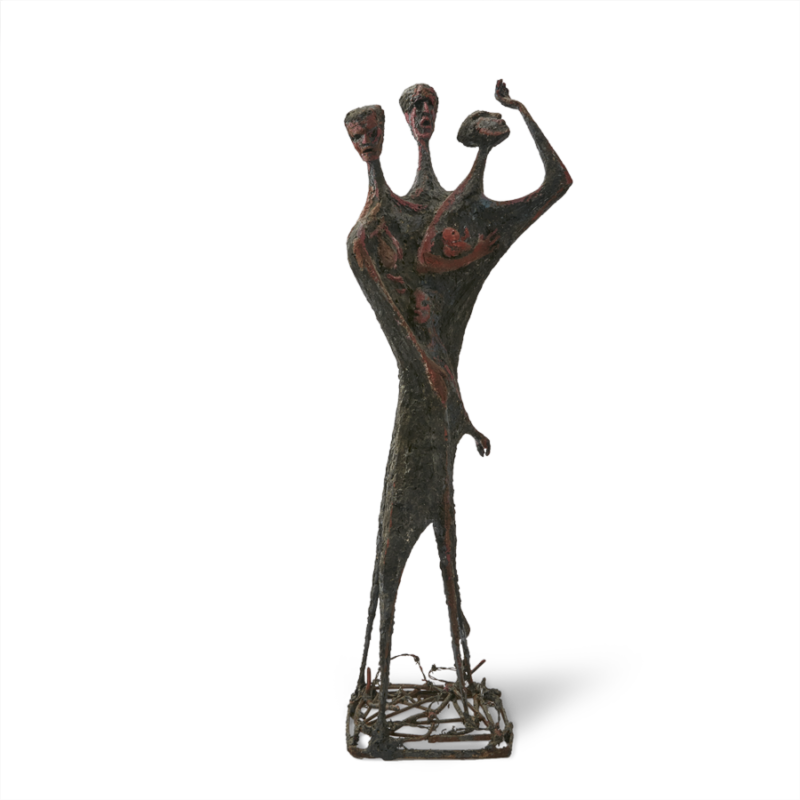
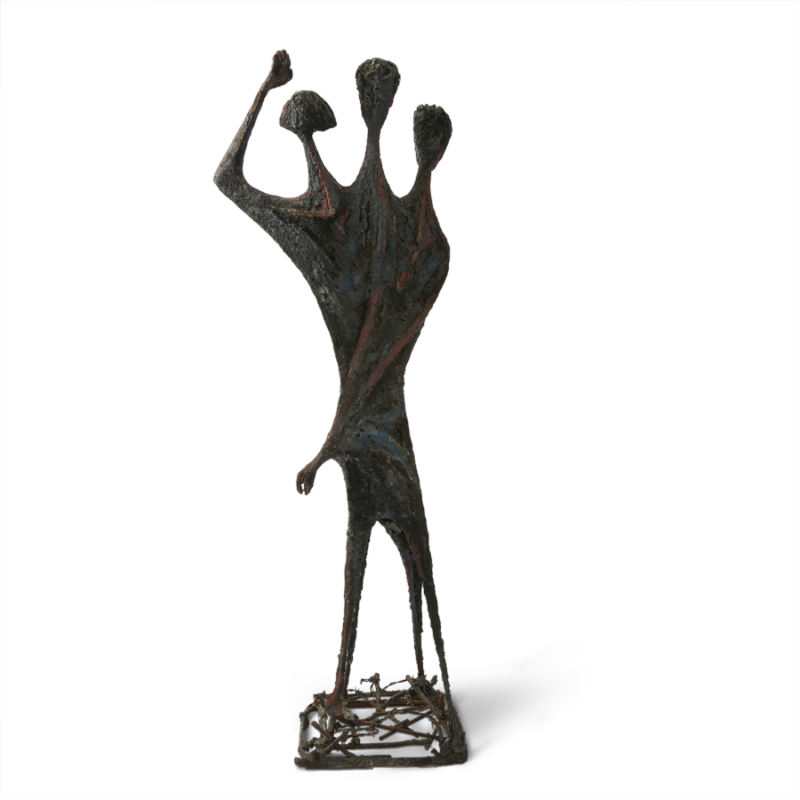
FLEEING FAMILY 2
130cm x 59cm x 26cm
Resin and spray paint
1994
A stricken family are caught in their homelands conflict of war and confusion


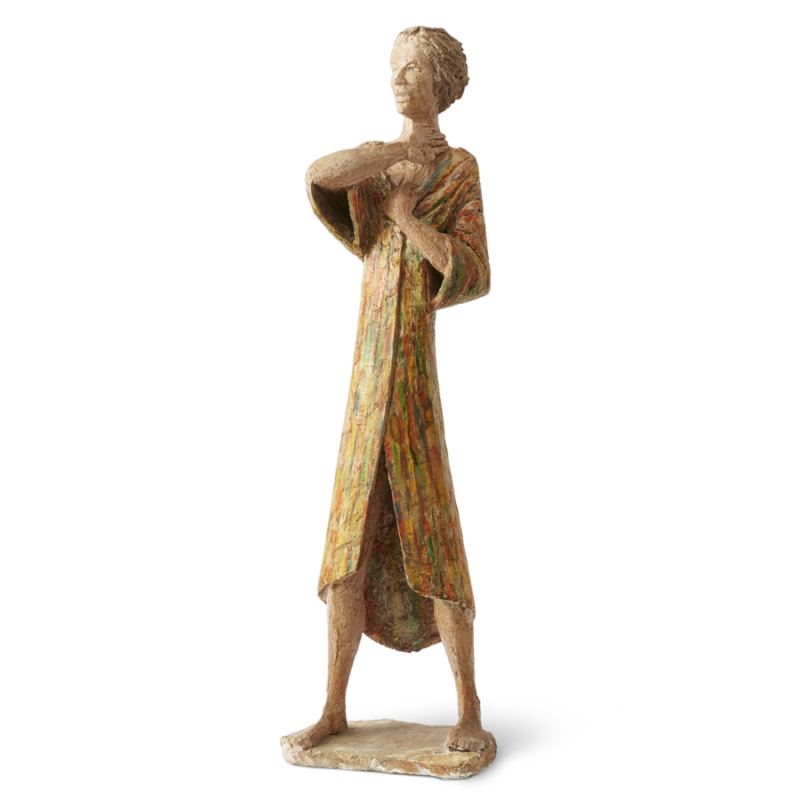
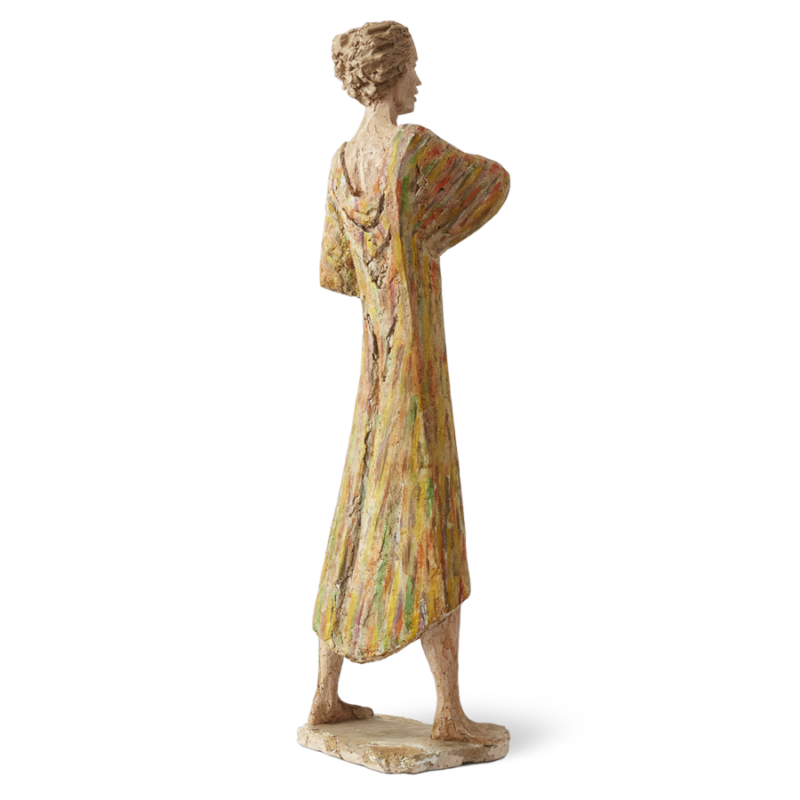
JOSEPH IN FEAR OF HIS BROTHERS
87cm x 20cm x 18cm
Plaster
1995
Joseph displays his coat of many colours


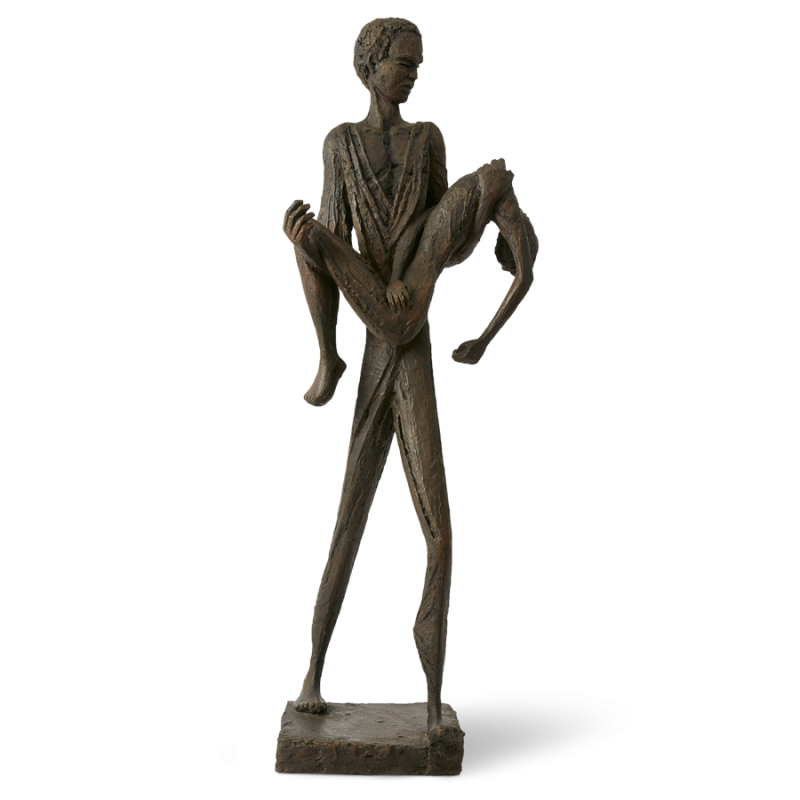
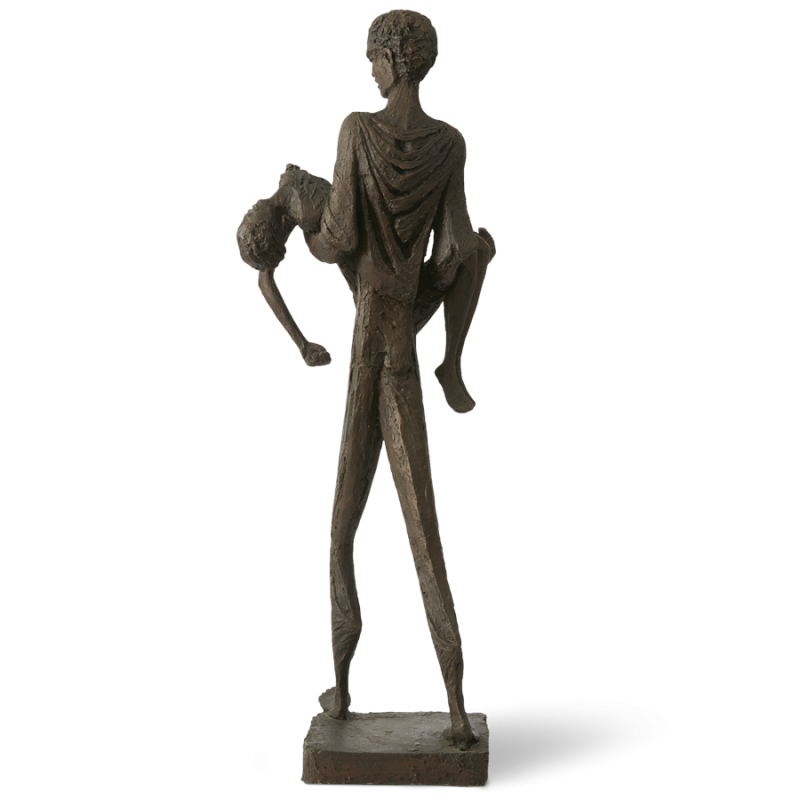
HOMAGE TO SOWETO
or 'VICTIMS OF INJUSTICE AND VIOLENCE'
Bronze
1995
Currently on permanent display in the St. Martin-in-the-Fields church. Inspired by the famous photograph taken during the Soweto massacre of 1976.


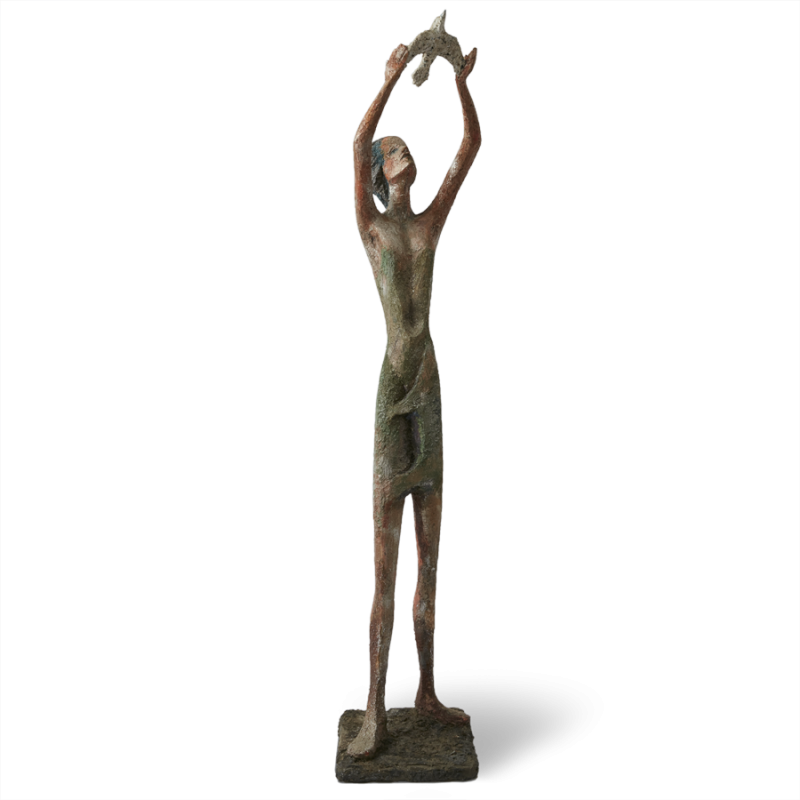
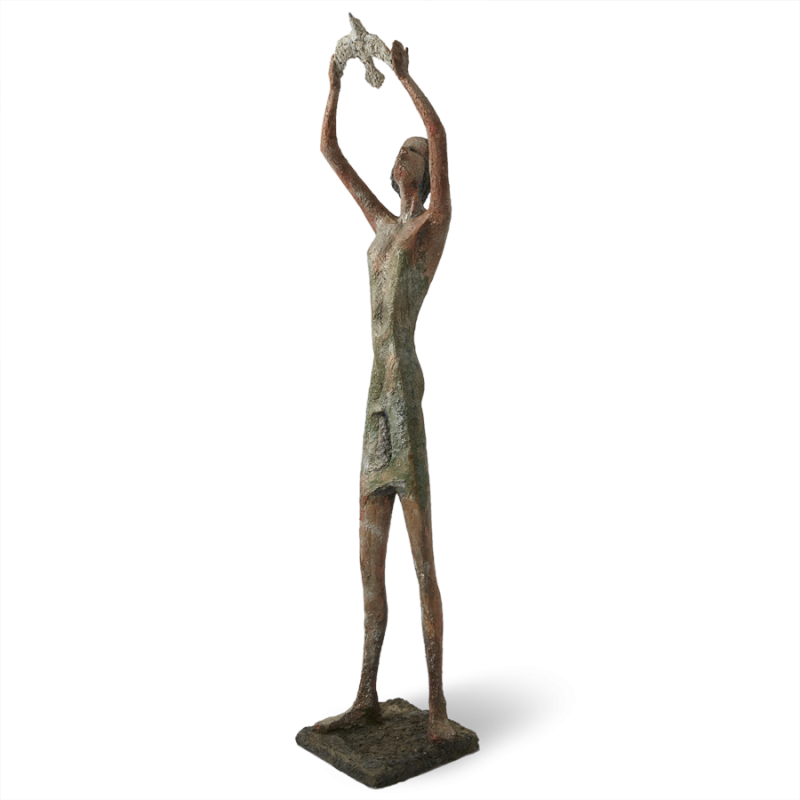
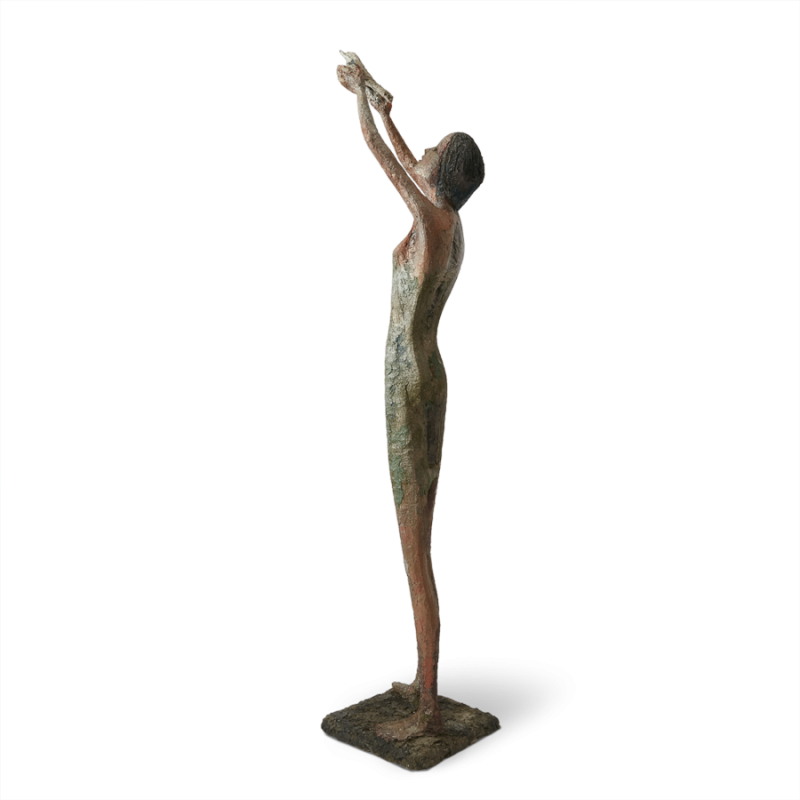
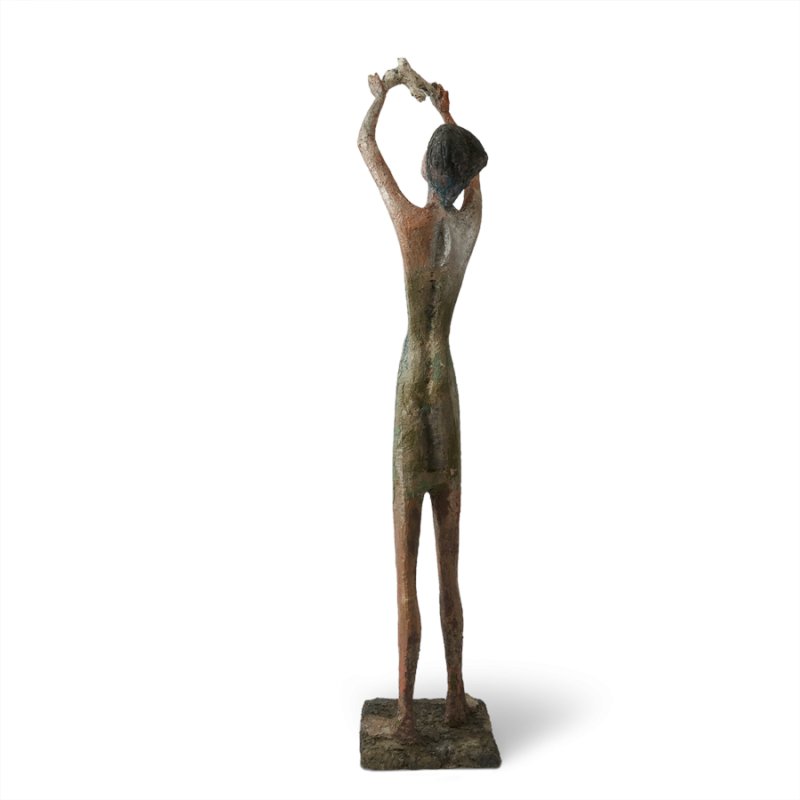
THE GIRL WITH A BIRD
185cm x 40cm x 40cm
Resin and spray paint
1999
A companion-piece to ‘THE BOY WITH THE BIRD’.




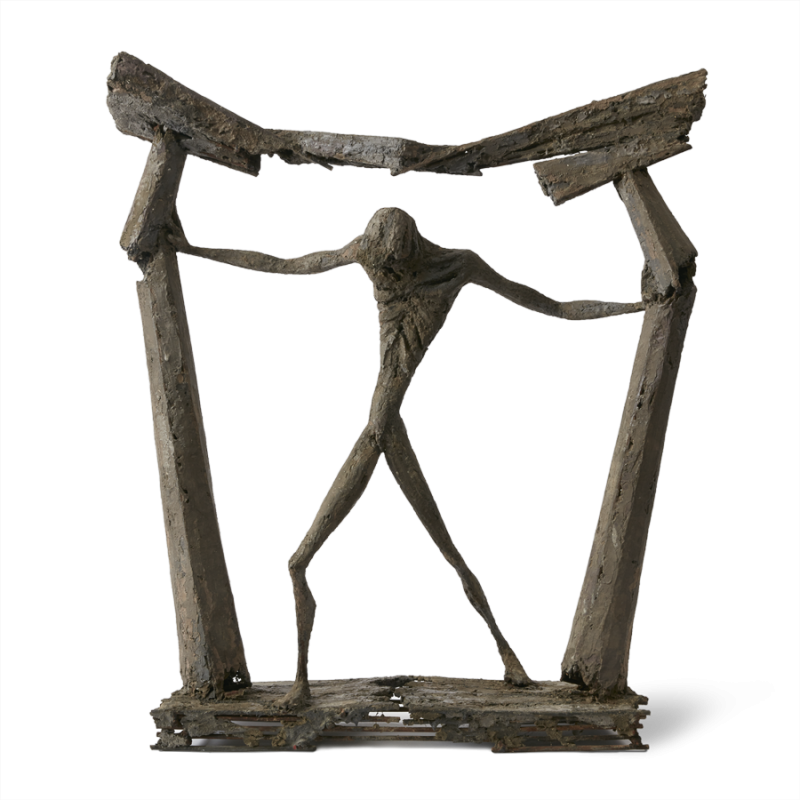
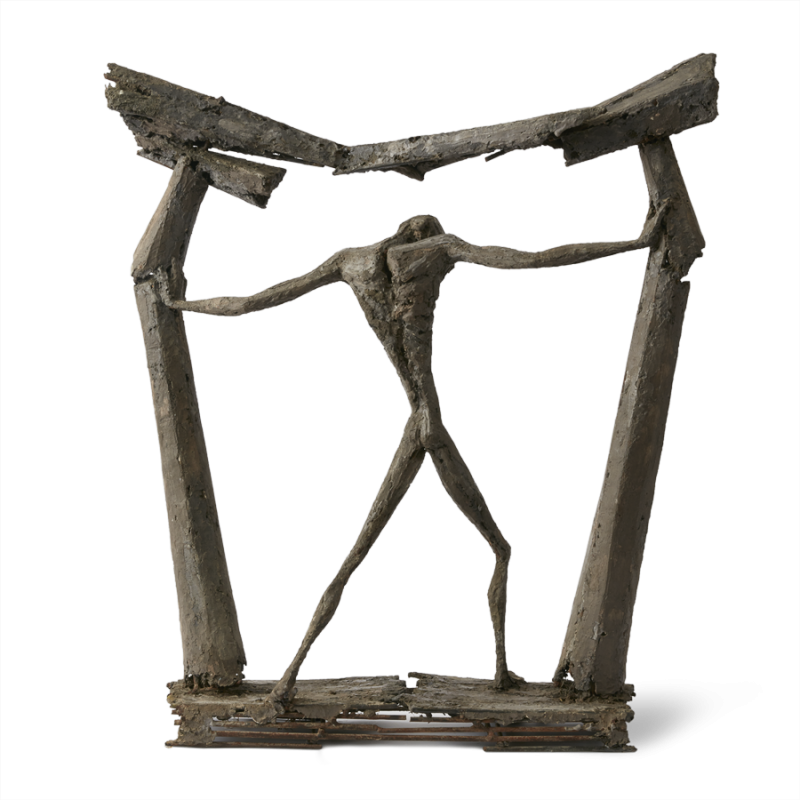
SAMSON IN THE TEMPLE
185cm x 40cm x 40cm
Resin
1972
Samson’s miraculous strength was in his hair. His treacherous wife, Delilah, cut his hair, enabling her people, the Philistines, to capture, blind, and chain him. While imprisoned, his hair grew again and his strength returned. Learning that the Philistines intended to parade their captive in the temple, Samson had himself led between two pillars which […]


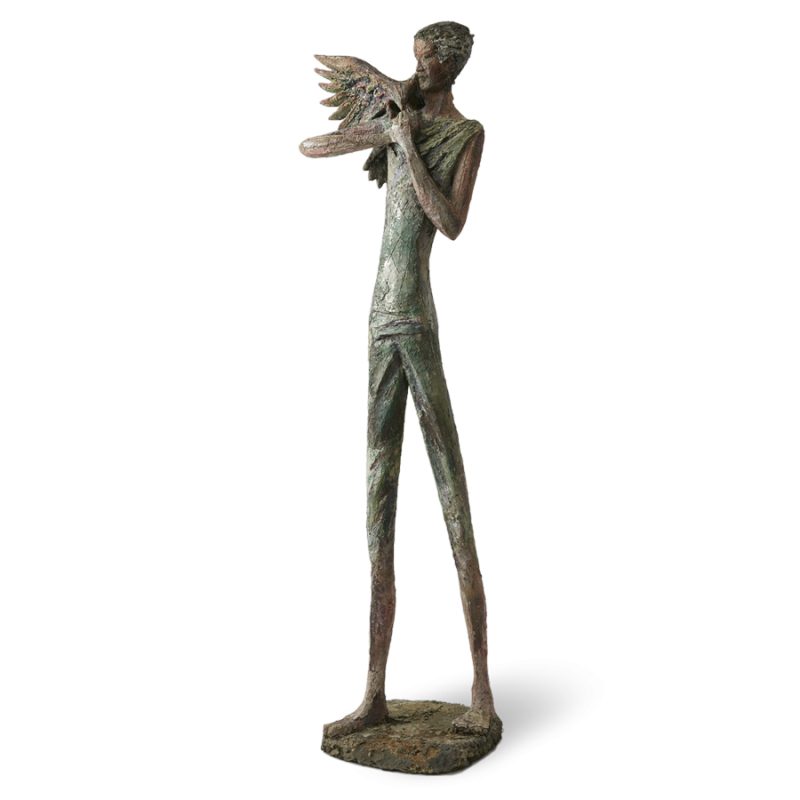
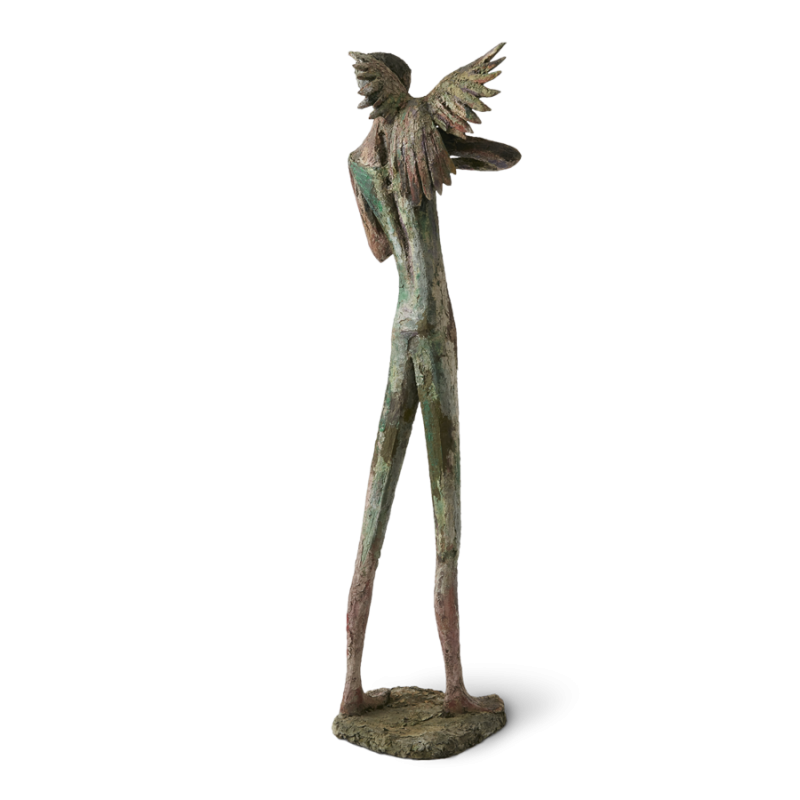
THE BOY WITH THE BIRD
162cm x 50cm x 42cm
Resin and spray paint
1999
A companion-piece to ‘THE GIRL WITH A BIRD’.


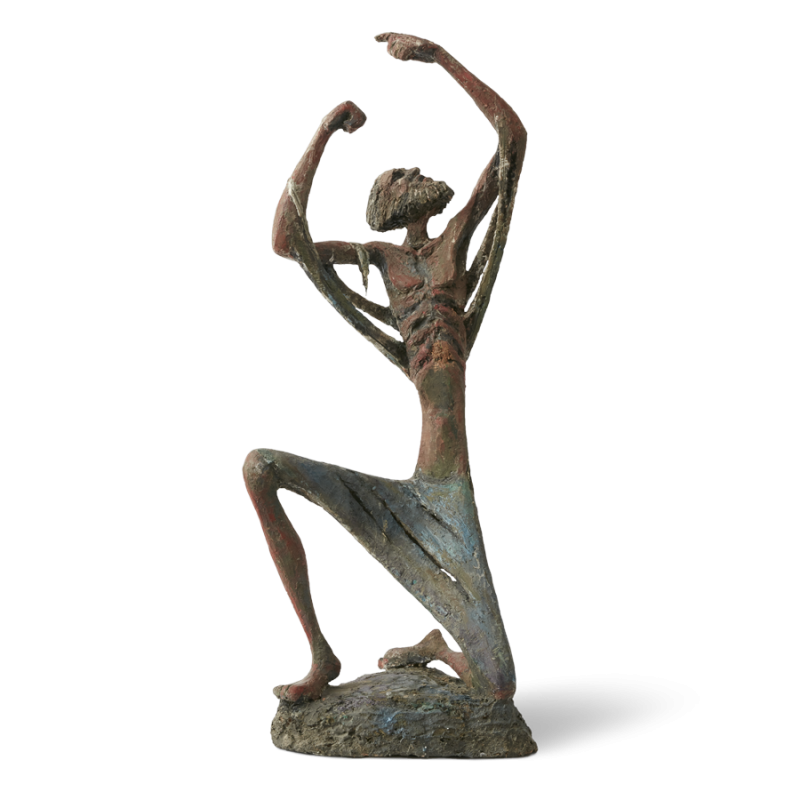
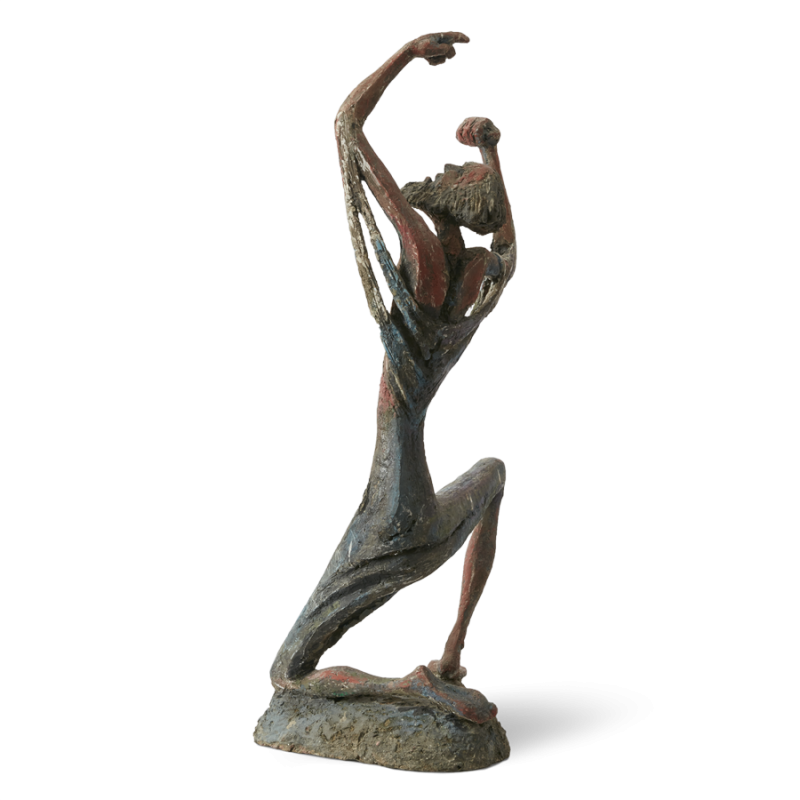
JOB
100cm x 40cm x 35cm
Resin
2000
Job was heaped with misfortunes and eventually became angry with God. The artist here evokes the rage and bewilderment people can feel at the unevenness of human destiny.


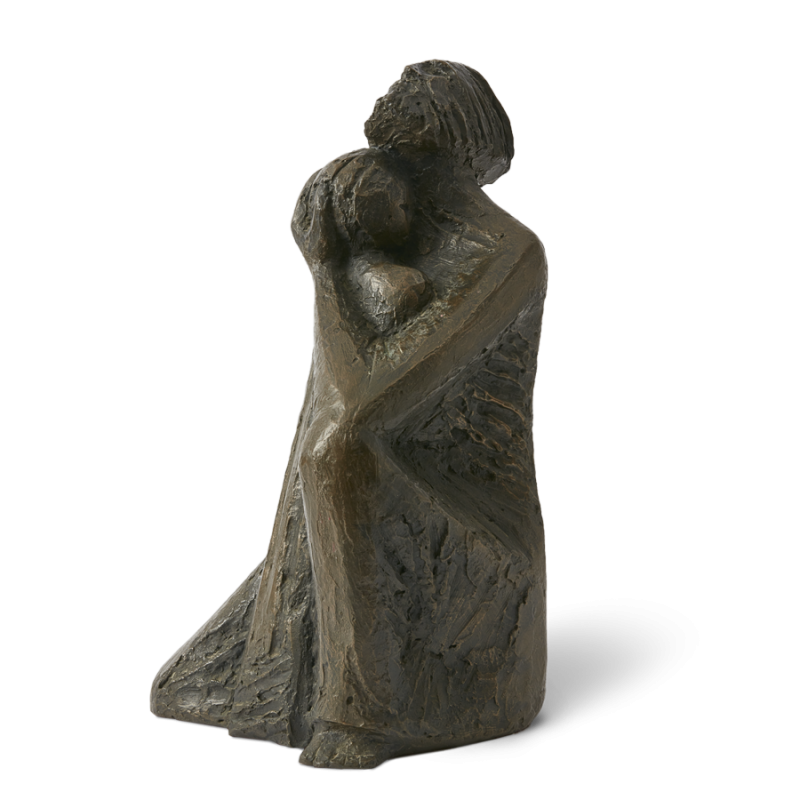
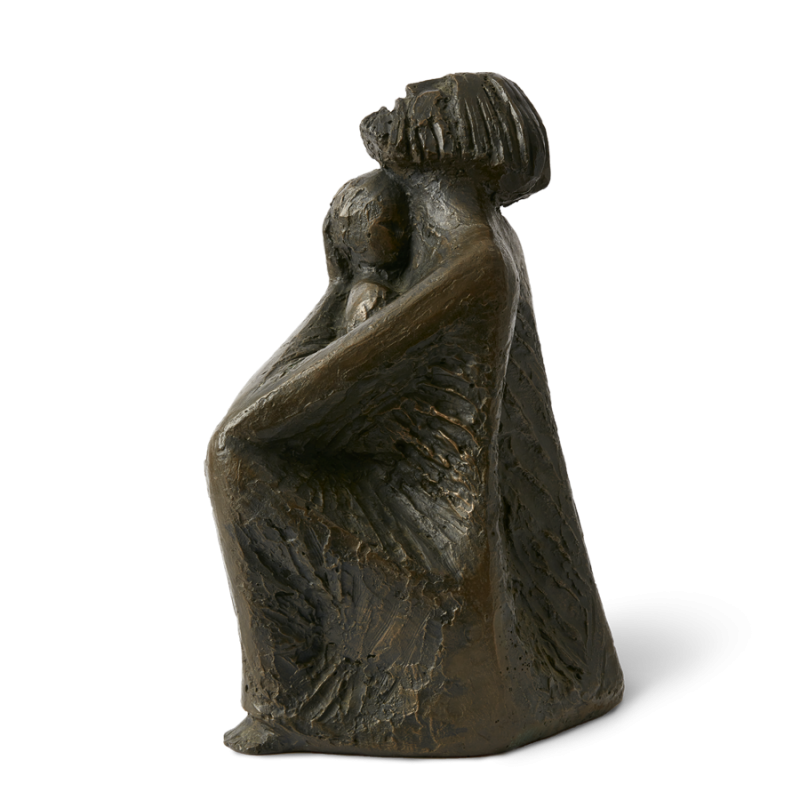
ABRAHAM AND ISAAC
42cm x 26cm x 26cm
Bronze
1987
Abraham was ordered by God to take his son Isaac up into Mt. Moriah and sacrifice him. This poignant version shows the father, holding his beloved son to his breast and hiding the sacrificial knife from him, staring up at God in mute, questioning anguish.


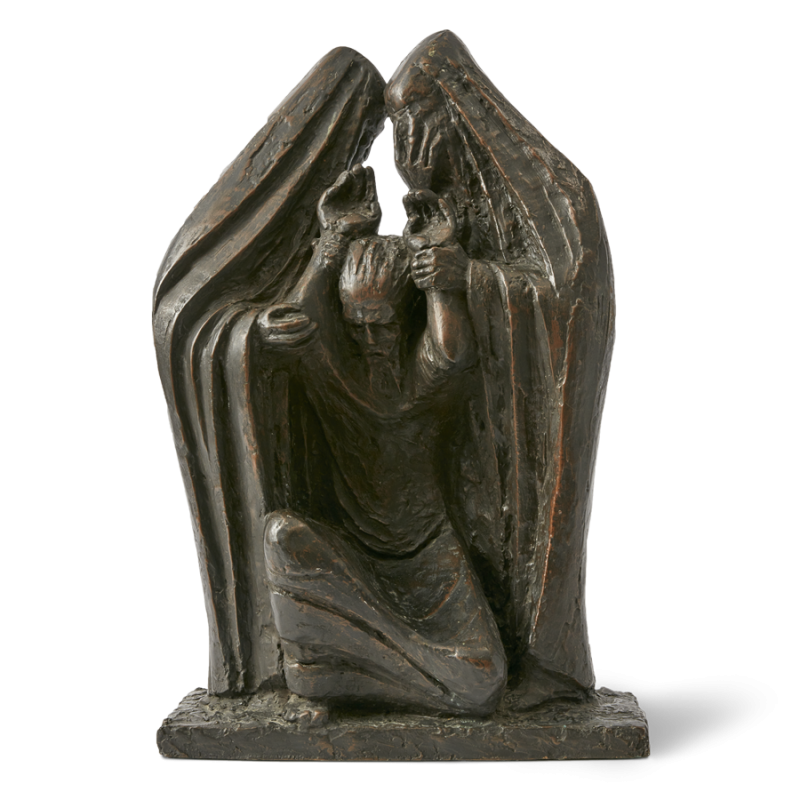
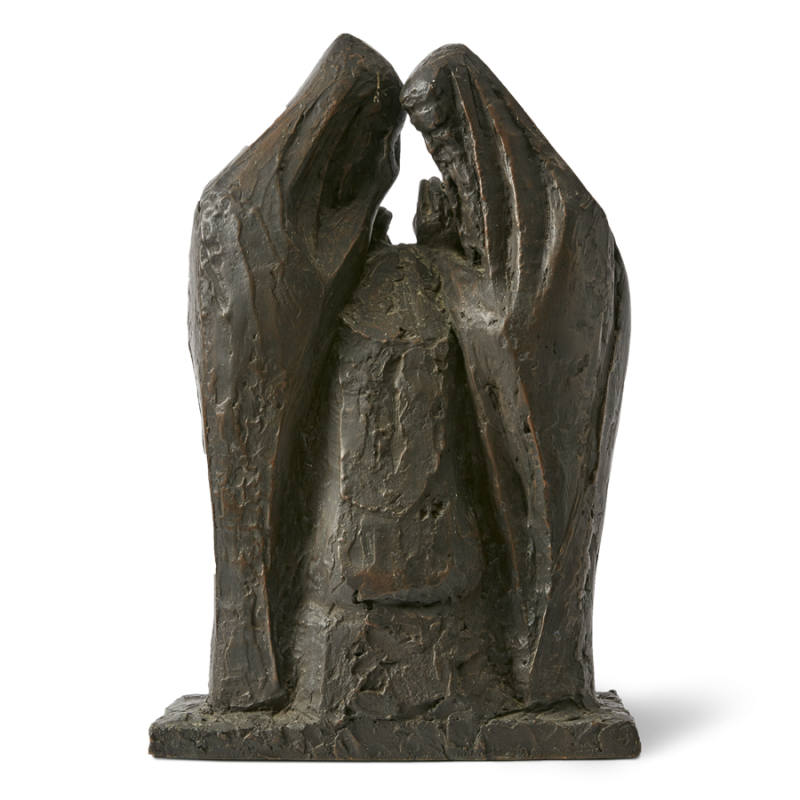
MOSES & THE BATTLE OF THE AMELECHS
54cm x 33cm x 18cm
Bronze
1976
On their flight from slavery, the Israelites encountered the Amelechs, a hostile tribe. God told Moses that as long as he held up his arms, his people would prevail. Two elders helped him, but none looked at the battle. The artist saw this as an analogy of all wars.


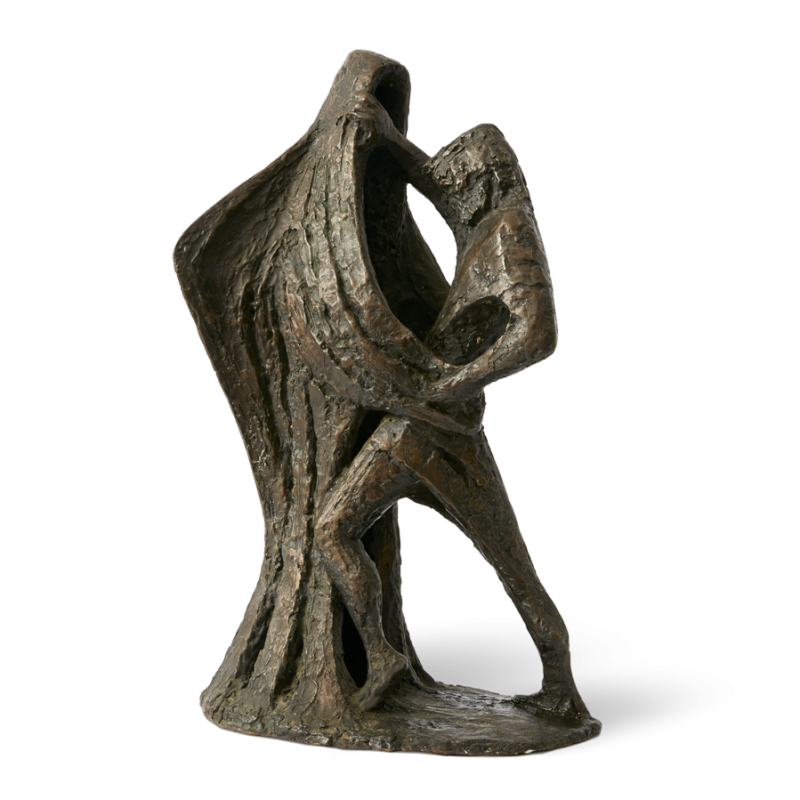
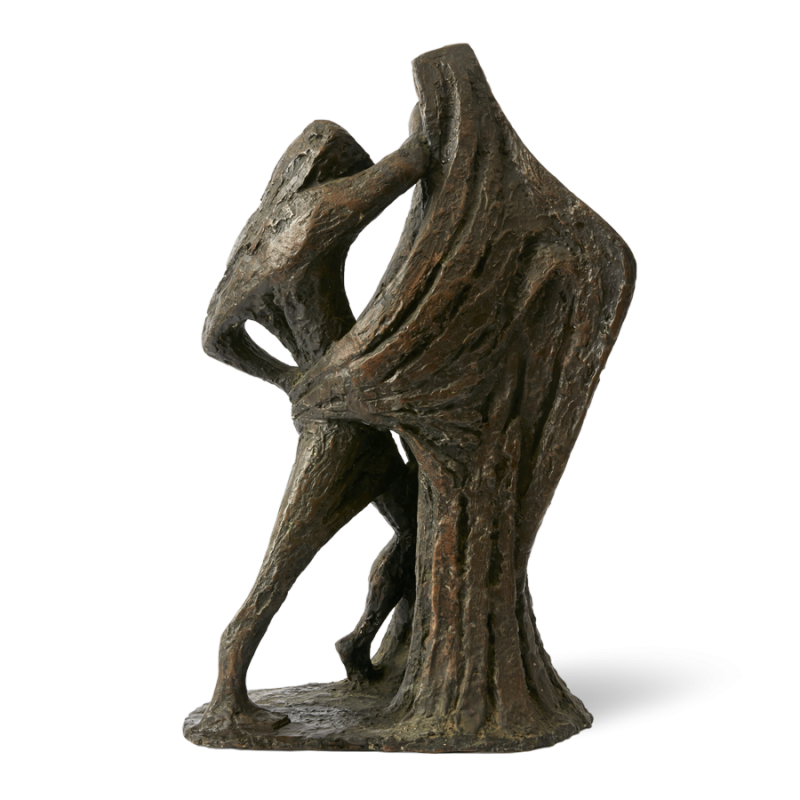
JACOB & THE ANGEL
55cm x 35cm x 23cm
Bronze
1975
When Jacob was leading his family and flocks back to his birthplace, he encountered a stranger who fought with him all night, eventually subduing him with a touch on his hip. When he withdrew, the angel renamed him Israel, which means ‘He who strives with God’, implying that perhaps the angel was God.


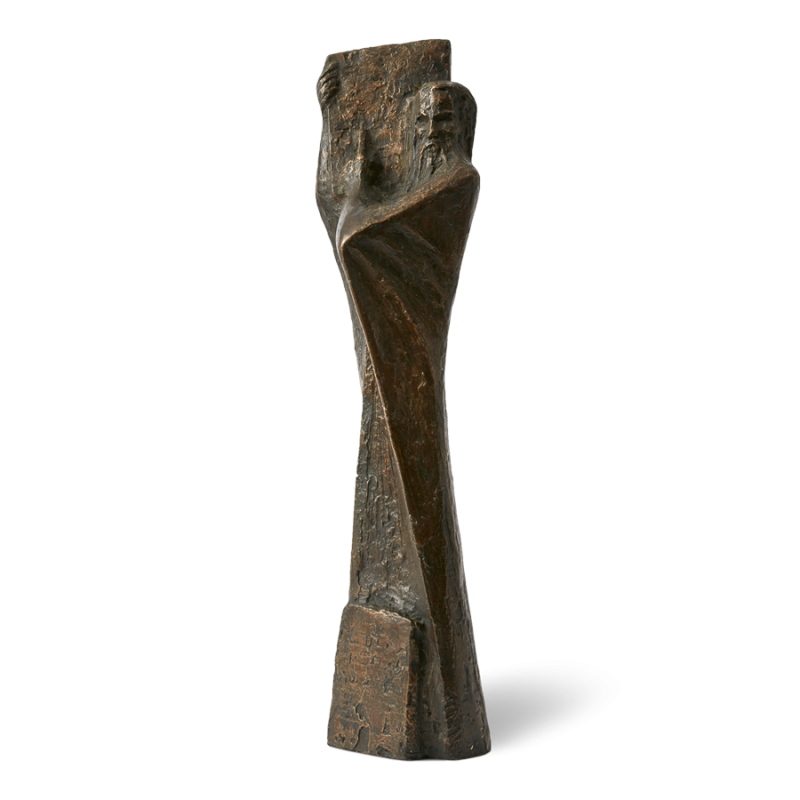
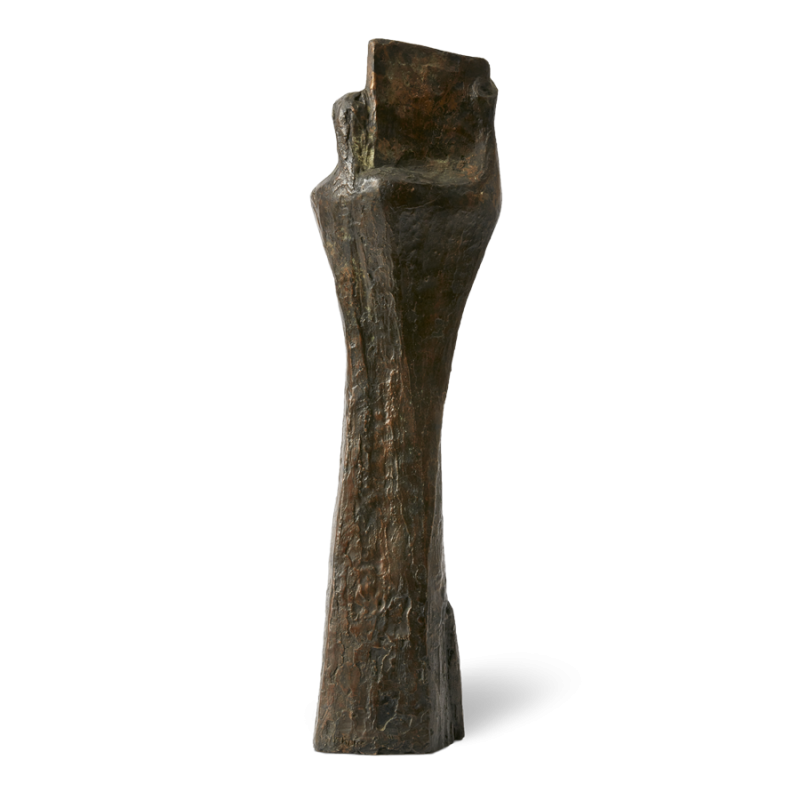
MOSES AND THE TABLETS
60cm x 17cm x 15cm
Bronze
1974
Depicts Moses’ return from Mt. Sinai, bringing the tablets of the law to the Israelites en route to the Promised Land.


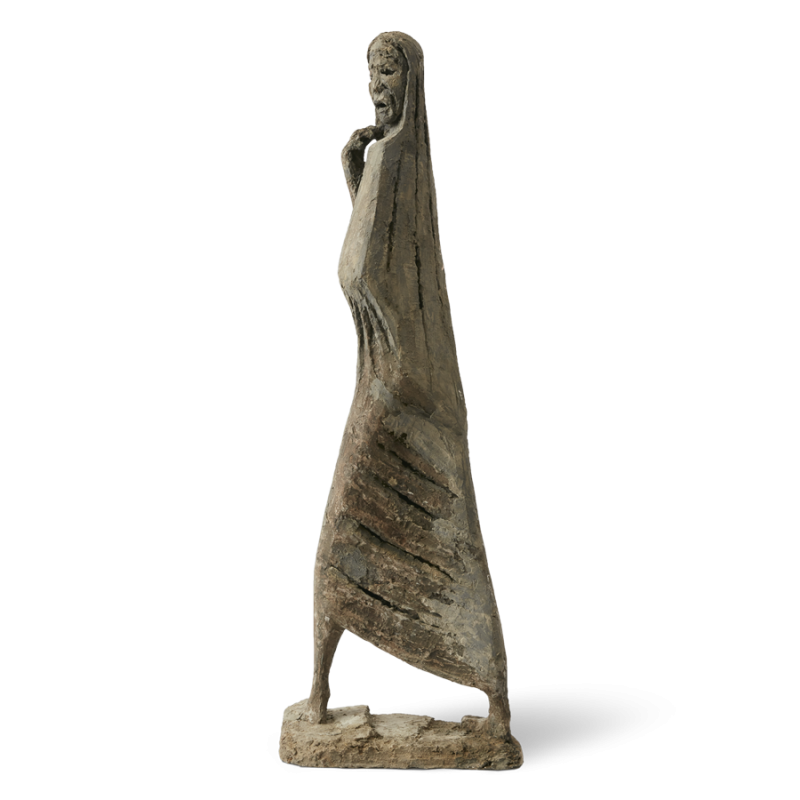
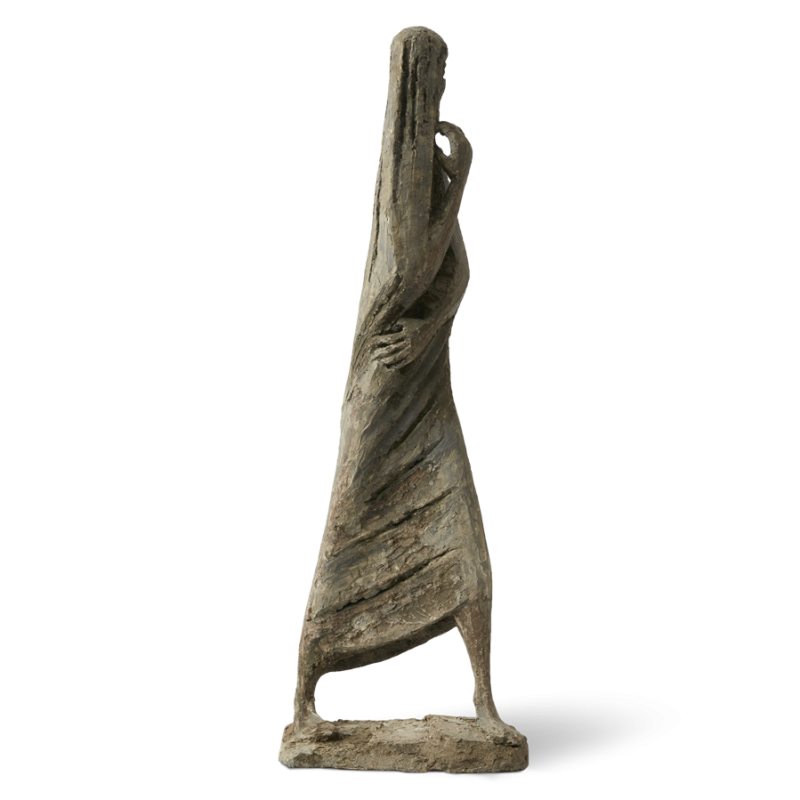
REFUGEE WOMAN
86cm x 20cmm x 20cm
Resin
1980
Alone and afraid, a woman looks back at her war torn country for the last time.


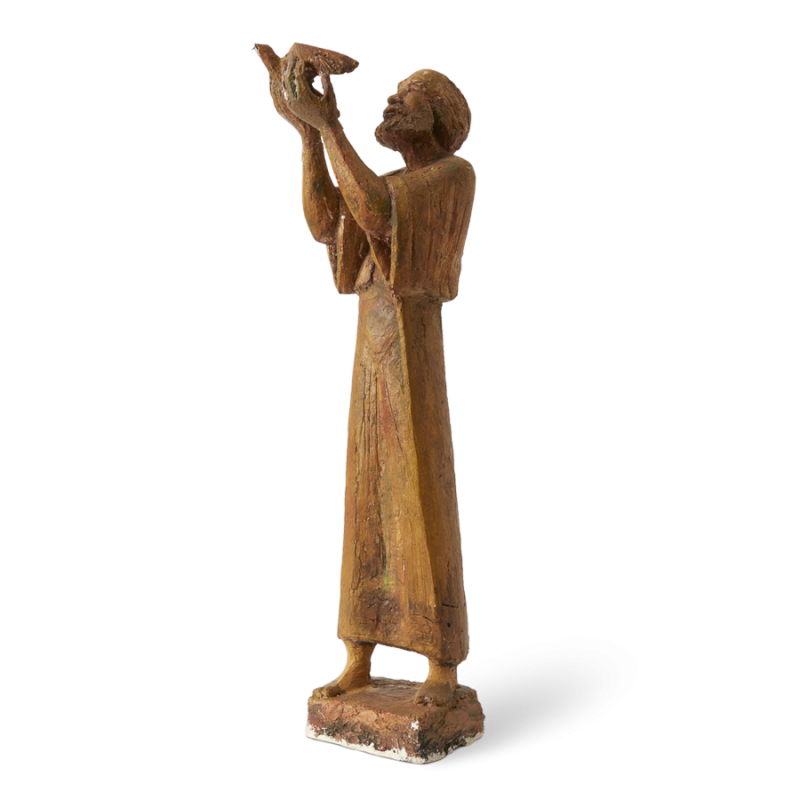
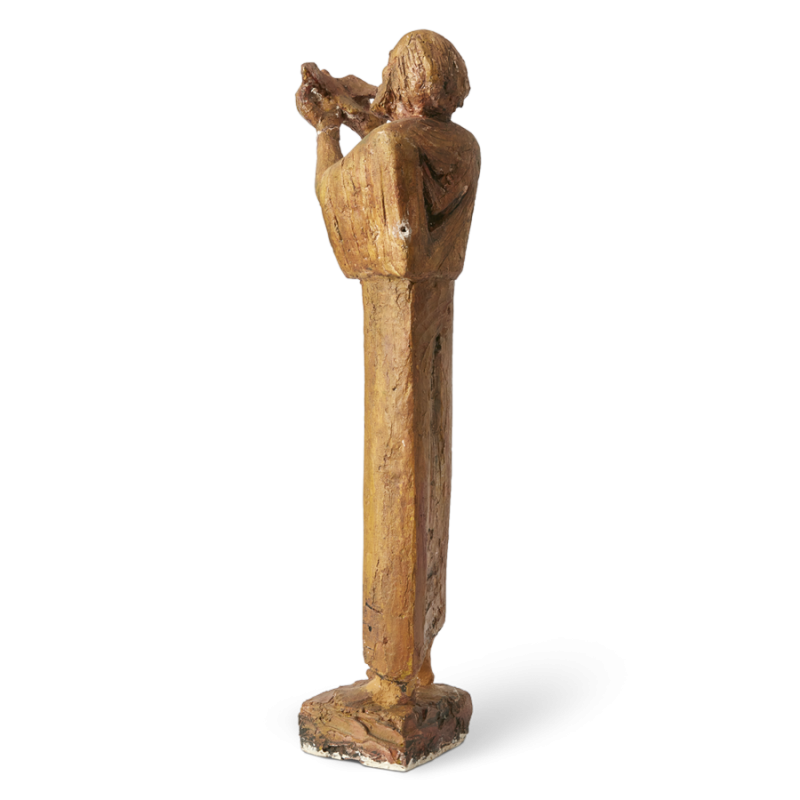
NOAH & THE DOVE
74cm x 15cm x 27cm
Plaster
1984
After the biblical flood, Noah, from the ark he had built at God’s instruction to save two of every kind, sent forth a dove to see if it could find dry land. The keynote of this sculpture is hope that springs eternal.


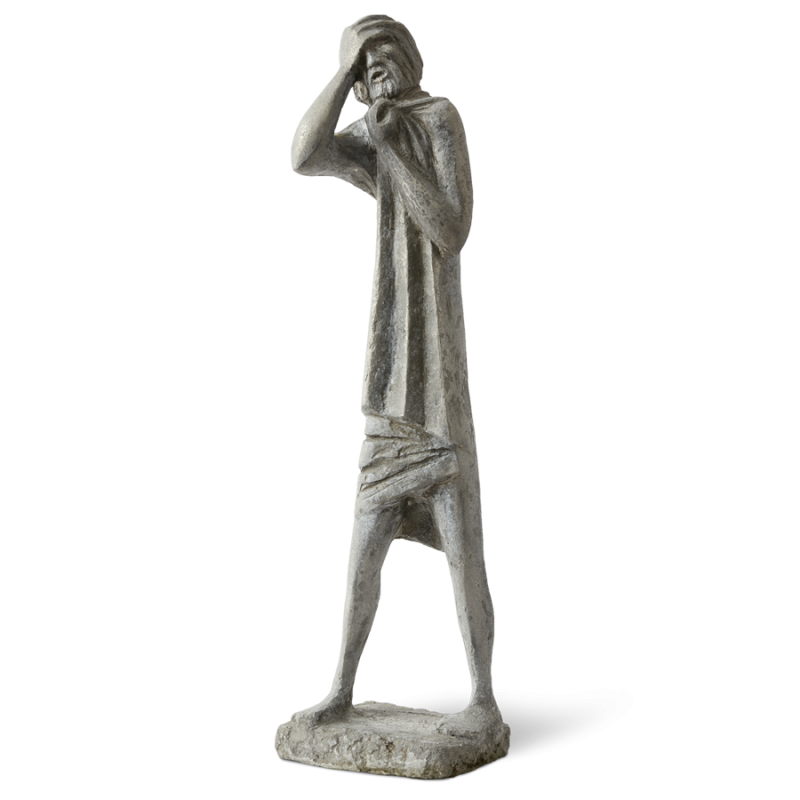
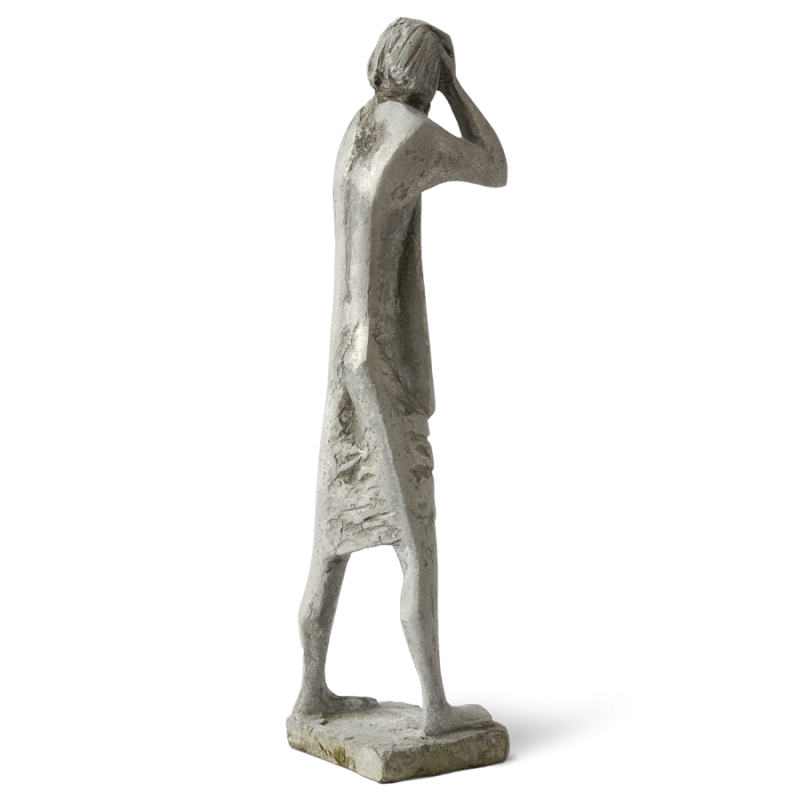
THE MARK OF CAIN
67cm x 18cm x 11cm
Aluminium
1988
Cain, son of Adam and Eve, having killed his brother Abel, is sent by God out into the world with an indelible mark on his forehead to proclaim him a fratricide.


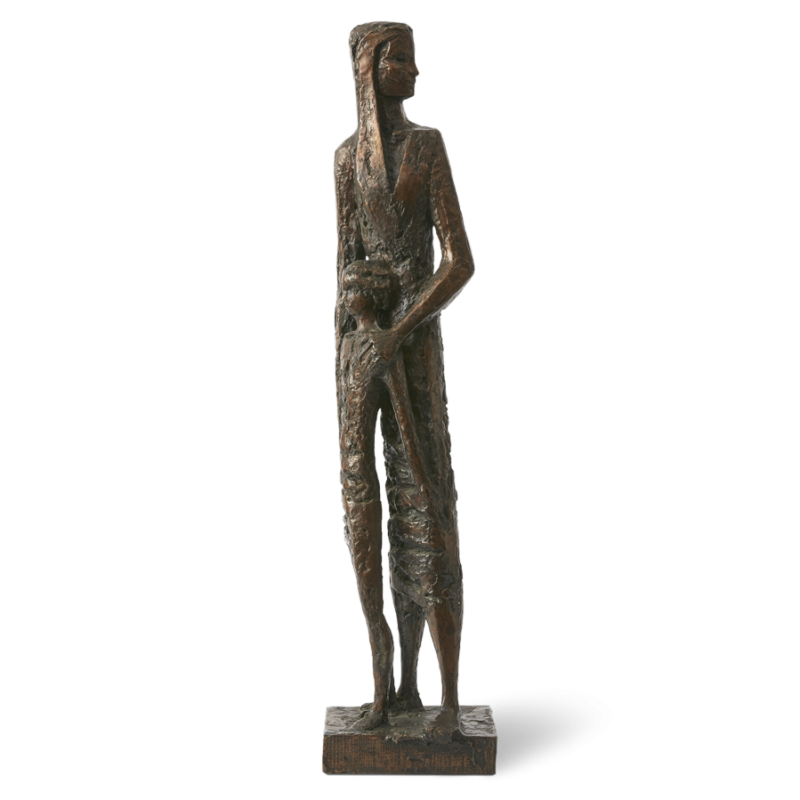
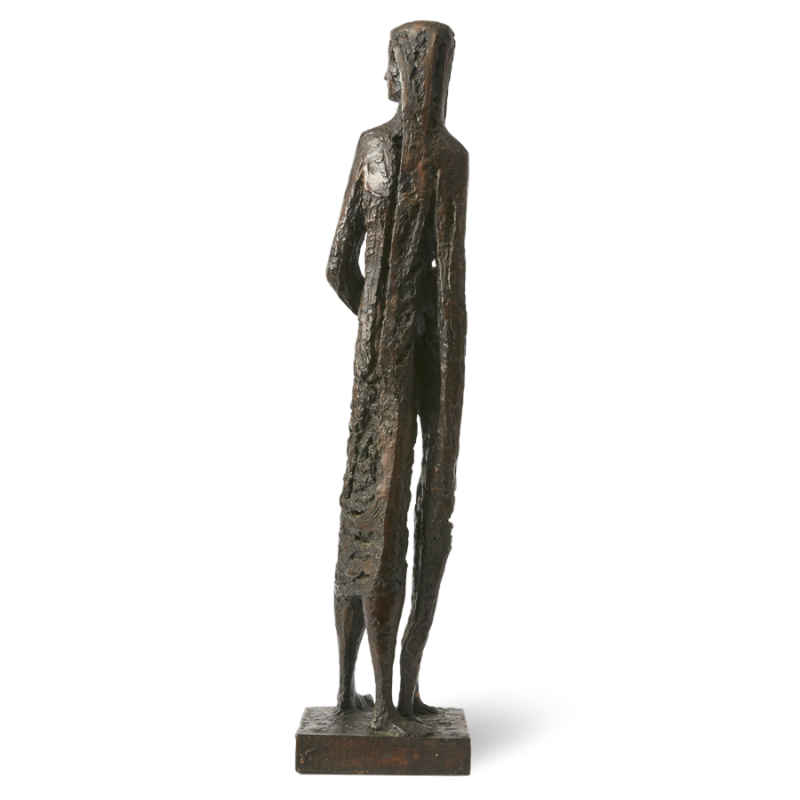
HAGAR & ISHMAEL
80cm x 20cm x 20cm
Bronze
1982
Hagar, Abraham’s second wife, is sent out into the desert with her son Ishmael, by first wife Sarah who feared Abraham favoured Ishmael over her son, Isaac. According to legend, the two boys were each the founders of great nations, Ishmael the Arabs and Isaac the Jews.


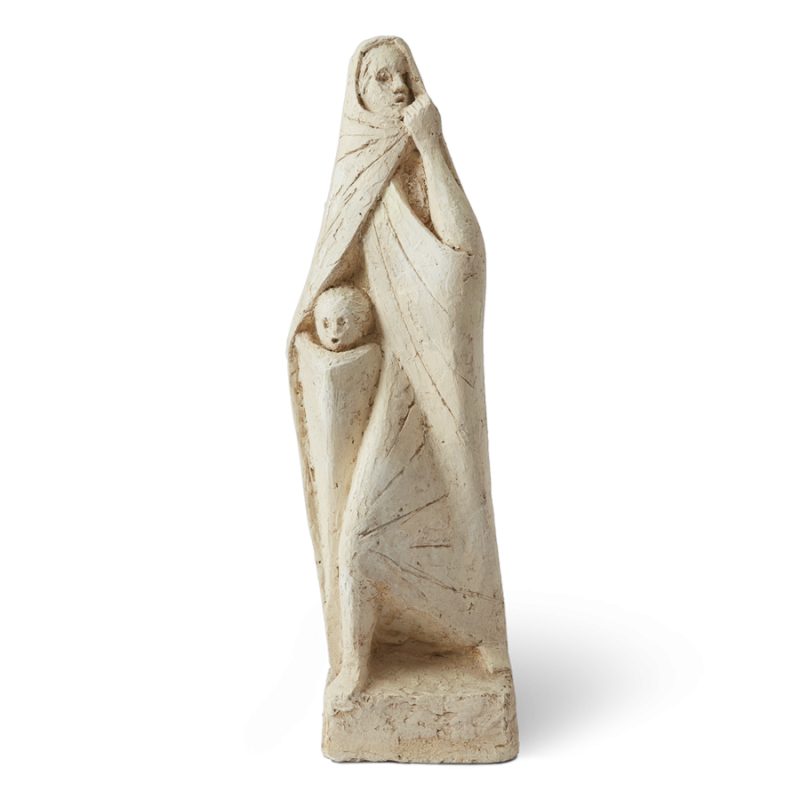
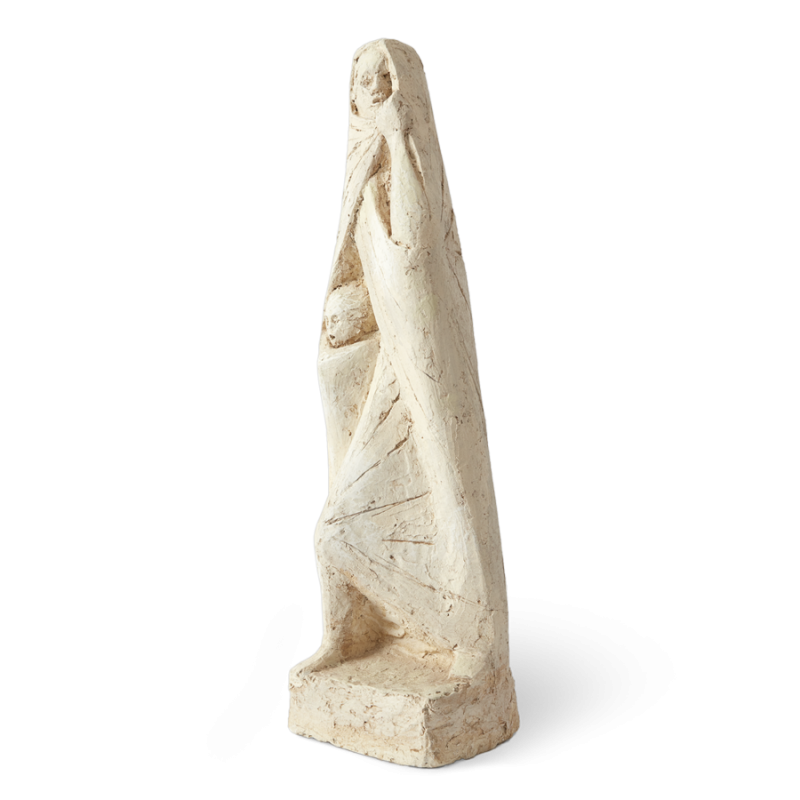
FLEEING MOTHER & CHILD
70cm x 20cm x 20cm
Plaster
2012
A study of a mother seeking safety for herself and her child. One of the last works the artist was able to make.


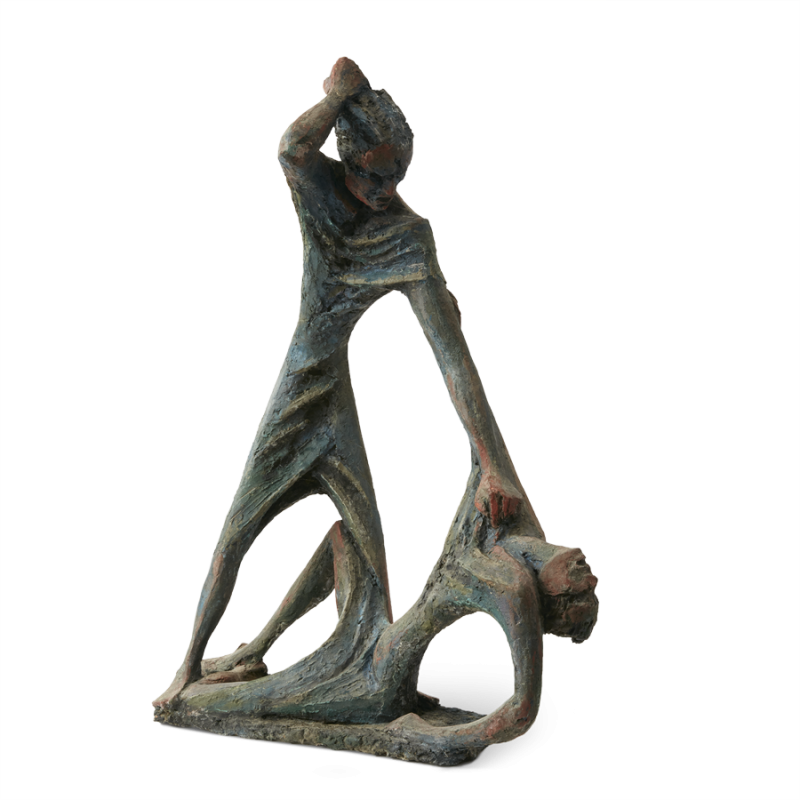
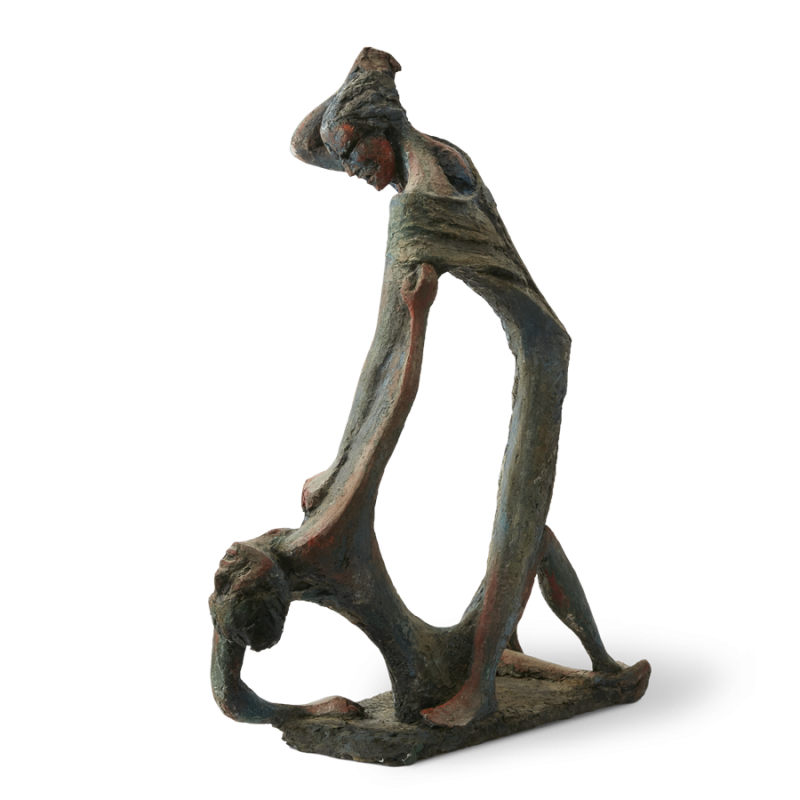
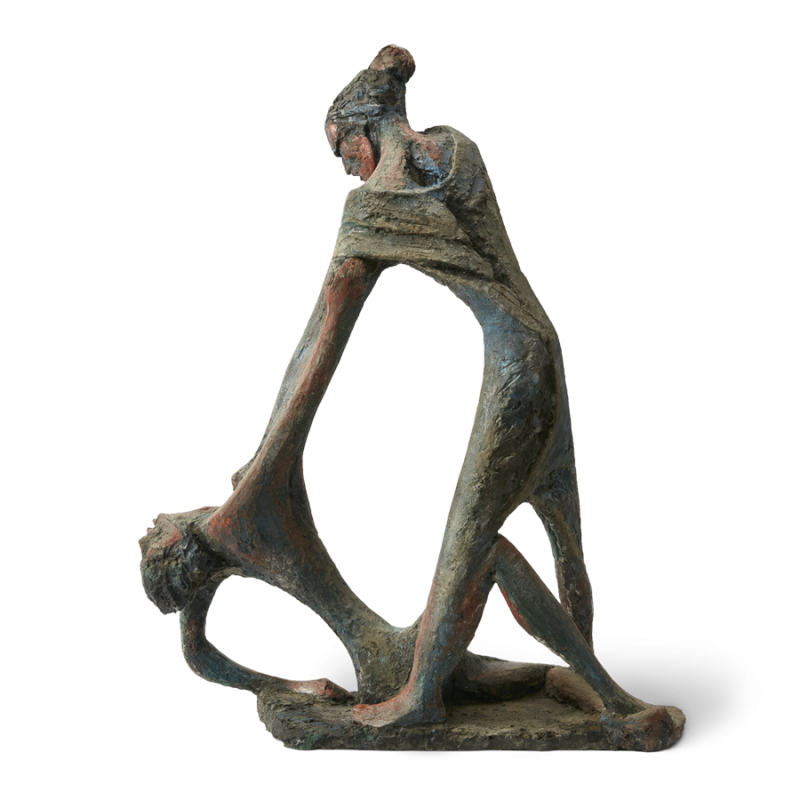
CAIN & ABEL
75cm x 66cm x 42cm
Resin
2002
Cain, son of Adam and Eve, became jealous of his brother Abel because God seemed to favour Abel’s sacrifice of grain over Cain’s of meat, so he slew his brother with a stone.



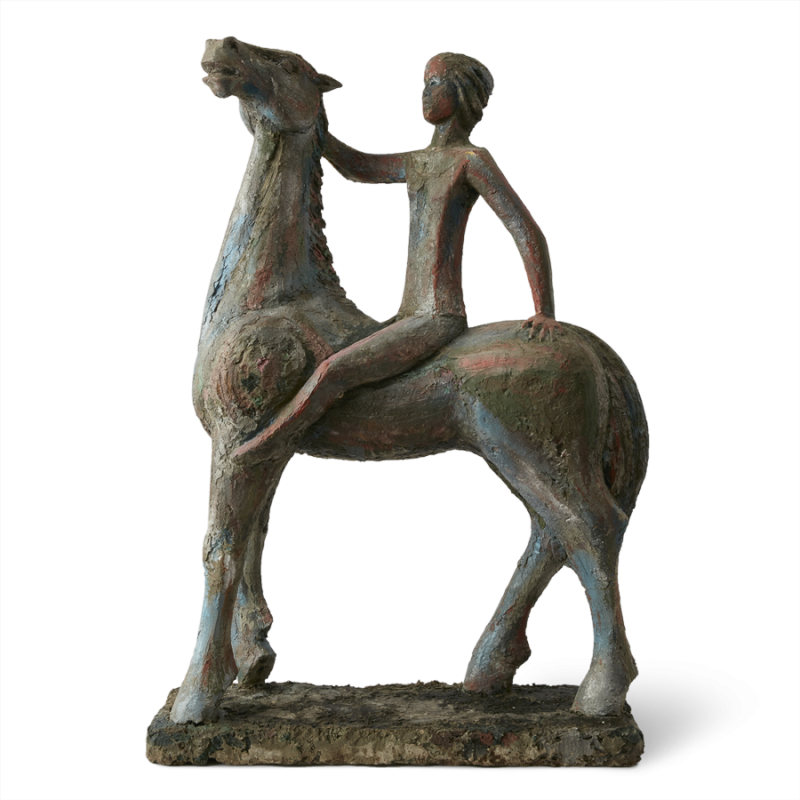
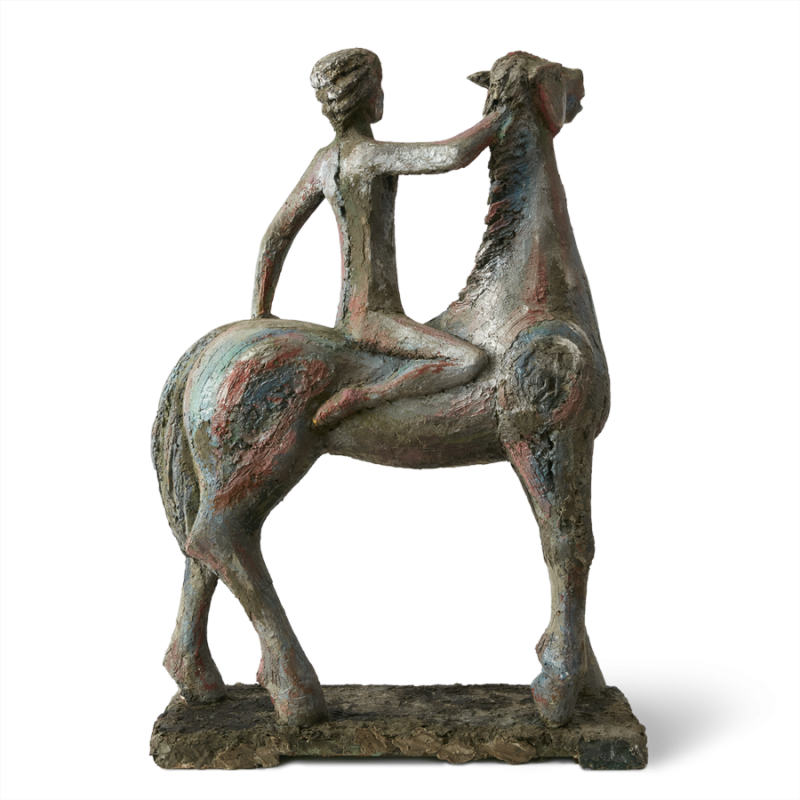
BOY ON A HORSE
102cm x 70cm x 30cm
Resin and spray paint
1998
This piece refers back to bucolic kibbutz days when the artist was a shepherd and used to ride out with the flock to pasture.


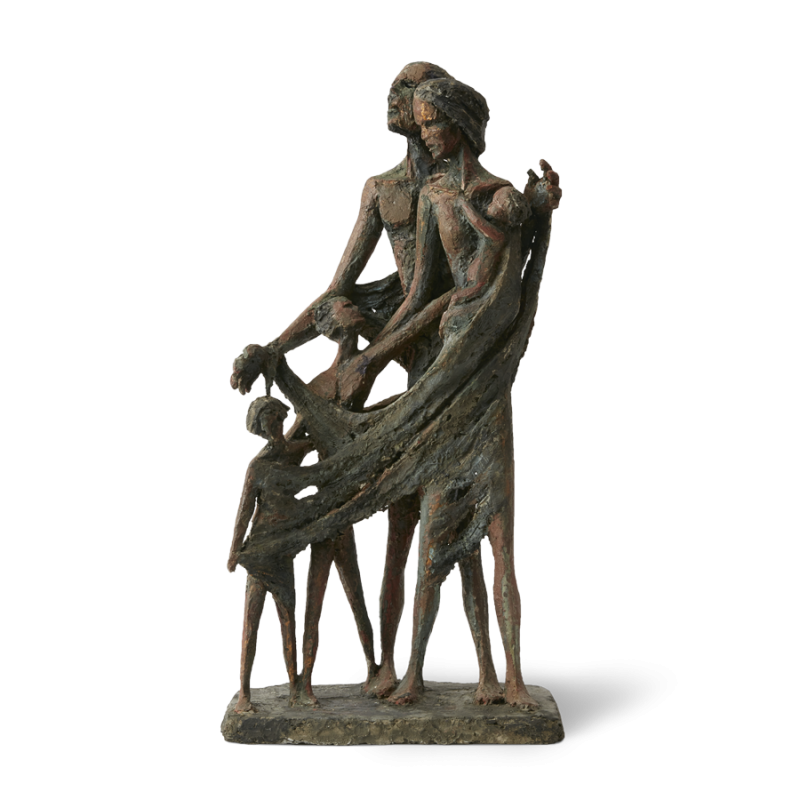
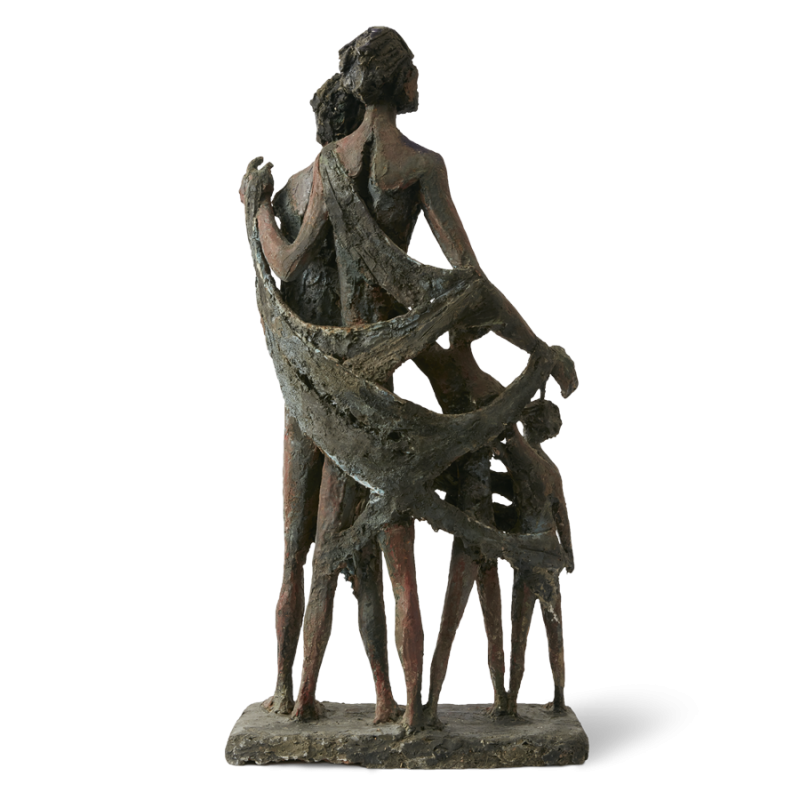
FLEEING FAMILY
72cm x 36cm x18cm
Resin
1995
The artist was always deeply concerned with the plight of refugees. This is one of his evocations of families fleeing famine, war or other disasters.


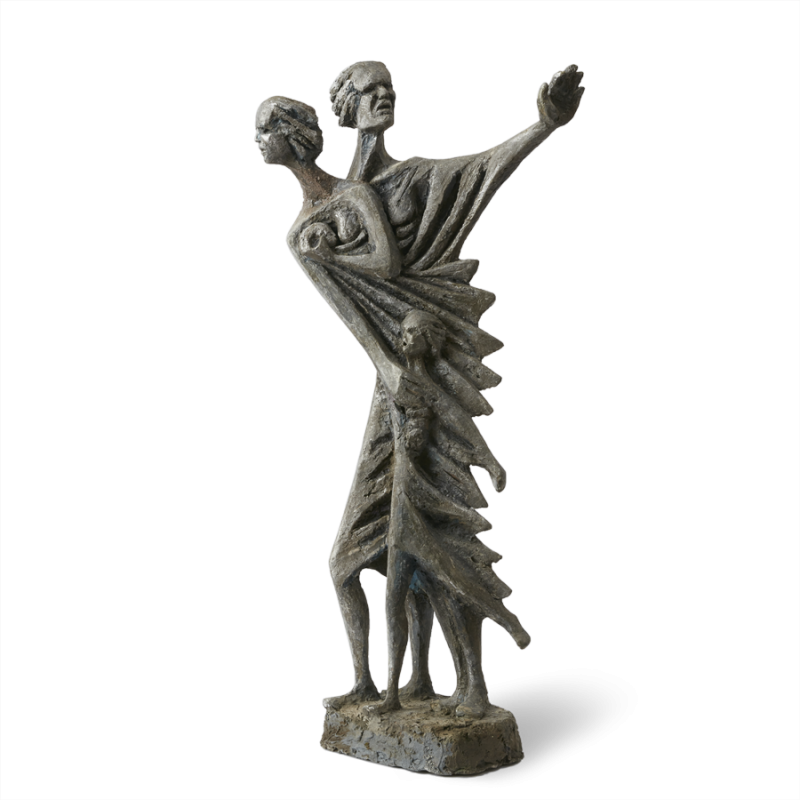
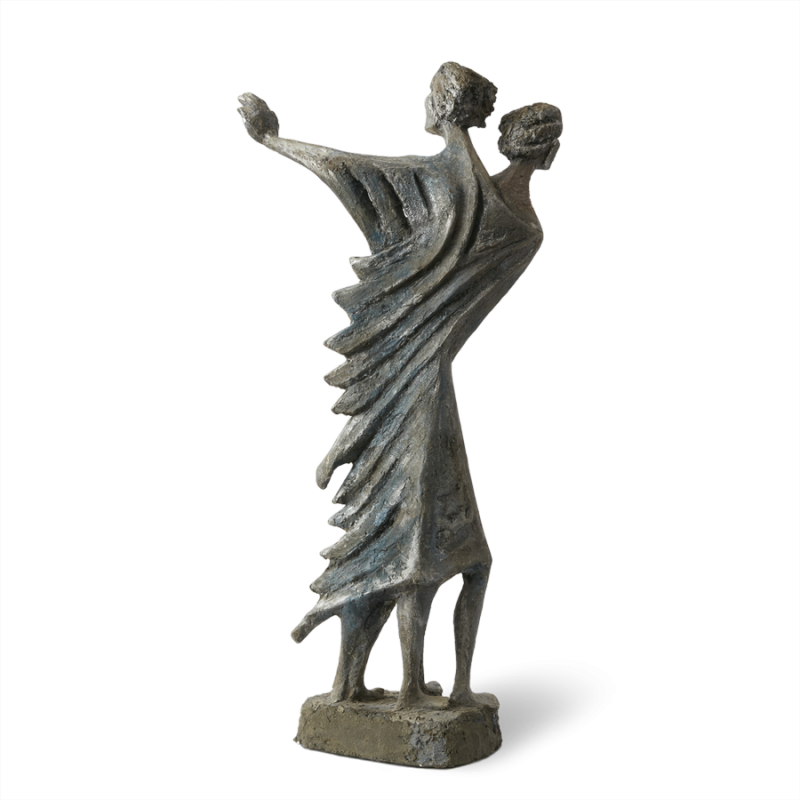
FAMILY IN FLIGHT
85cm x 33cm x 20cm
Resin
1993
Another view of the horrors of ordinary people in times of war.


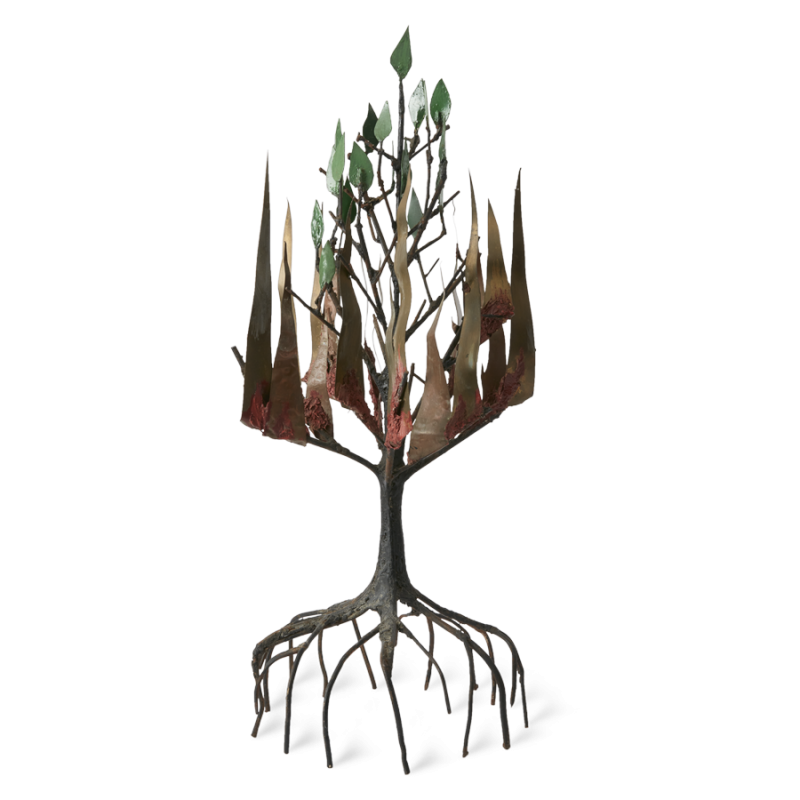
THE BURNING BUSH
82cm x 37cm 33cm
Metal (Brass Sheeting) and Resin
1990
“The bush that burns and burns, but is not consumed” – God’s proof to Moses – is the artist’s analogy of the Jewish people, who, despite centuries of persecution climaxing in the fires of the Holocaust, were not destroyed.

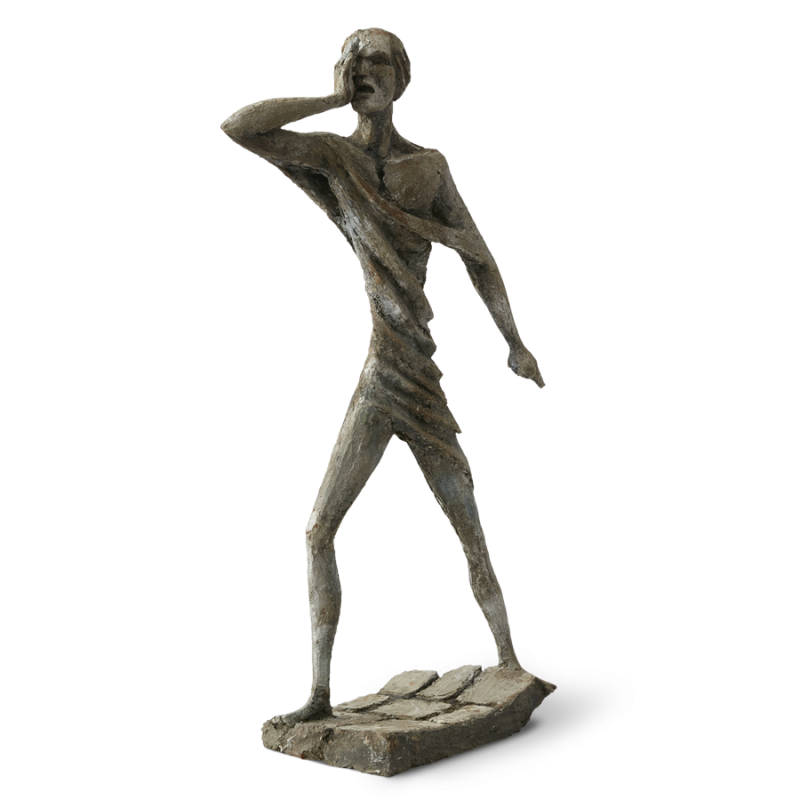
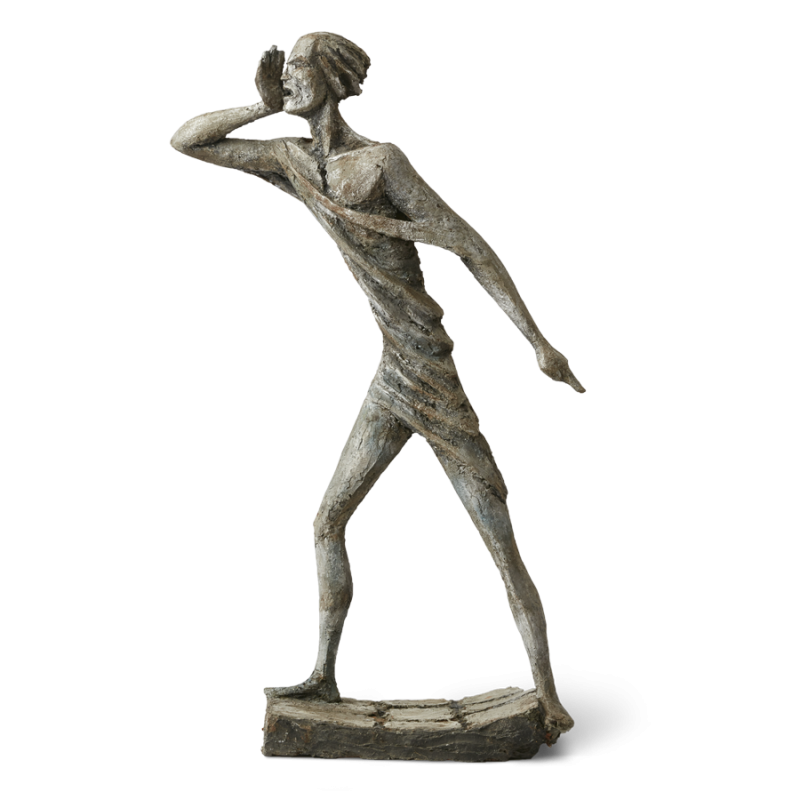
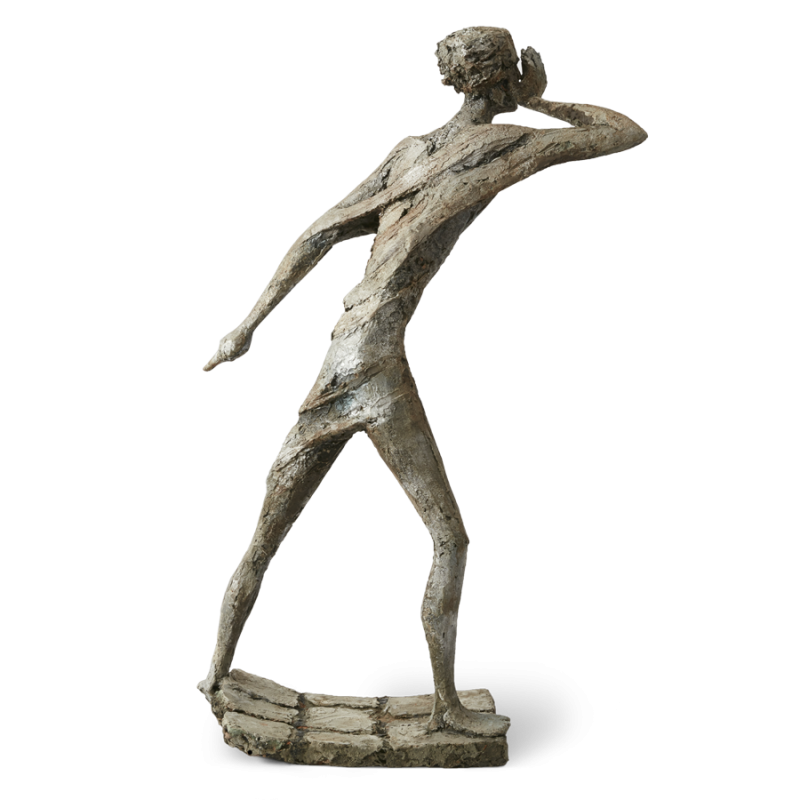
WARNING MAN
90cm x 40cm x 25cm
Resin
1994
One in the ‘Refugee’ series, showing a man running to warn his fellows of some oncoming disaster.



